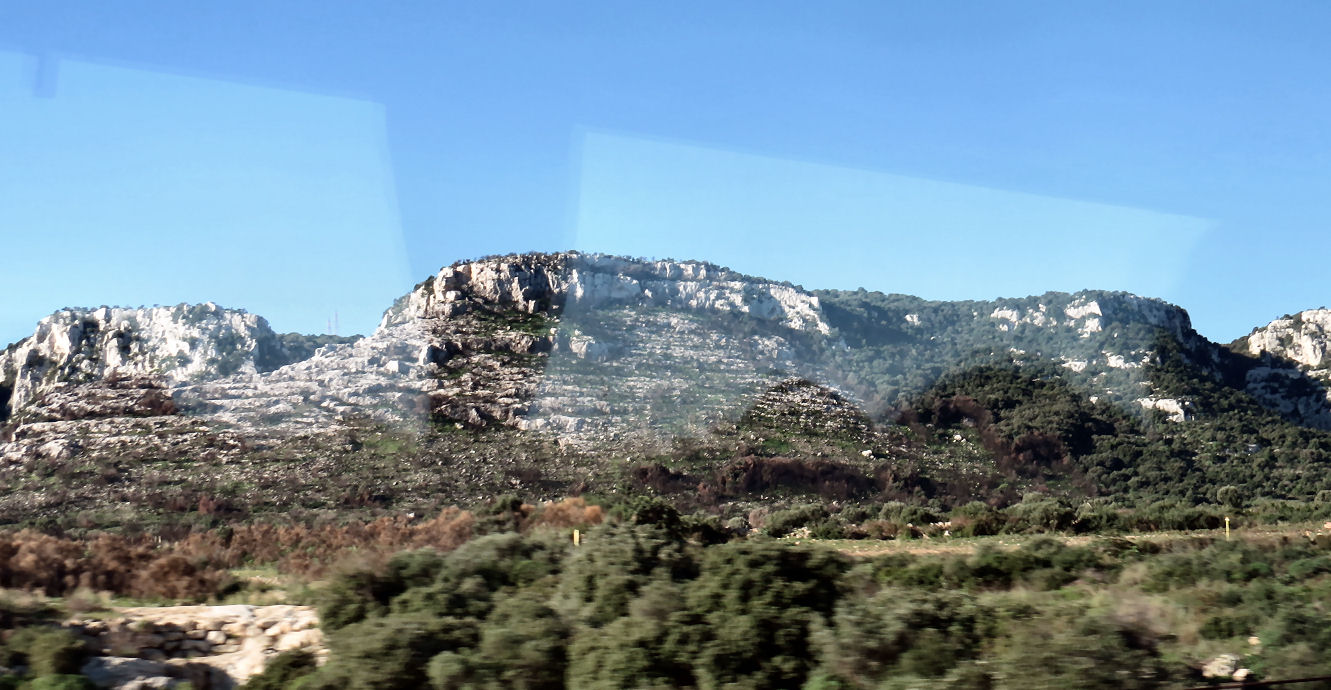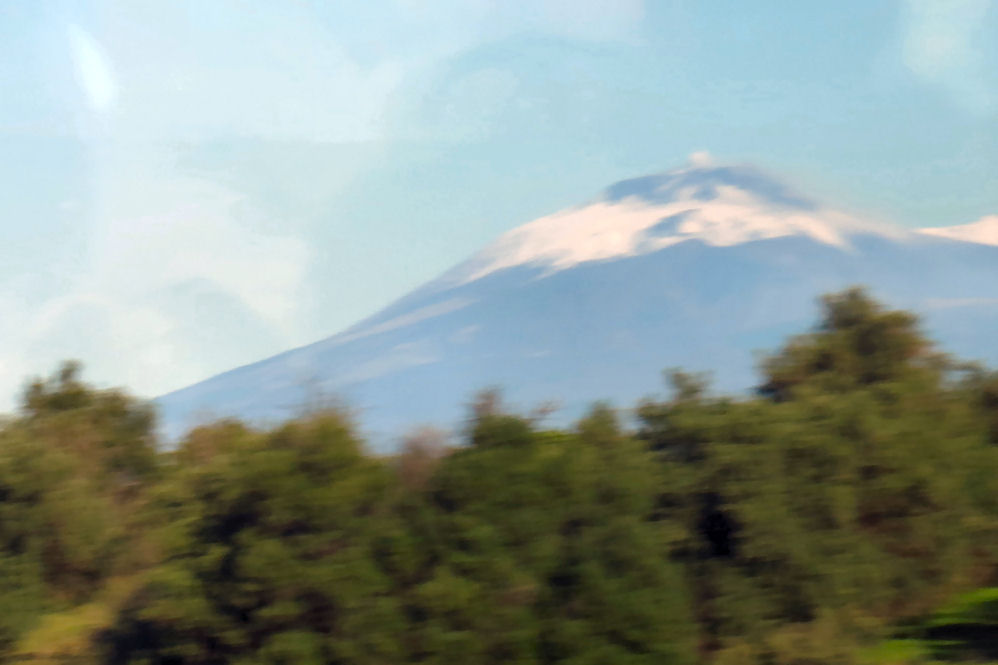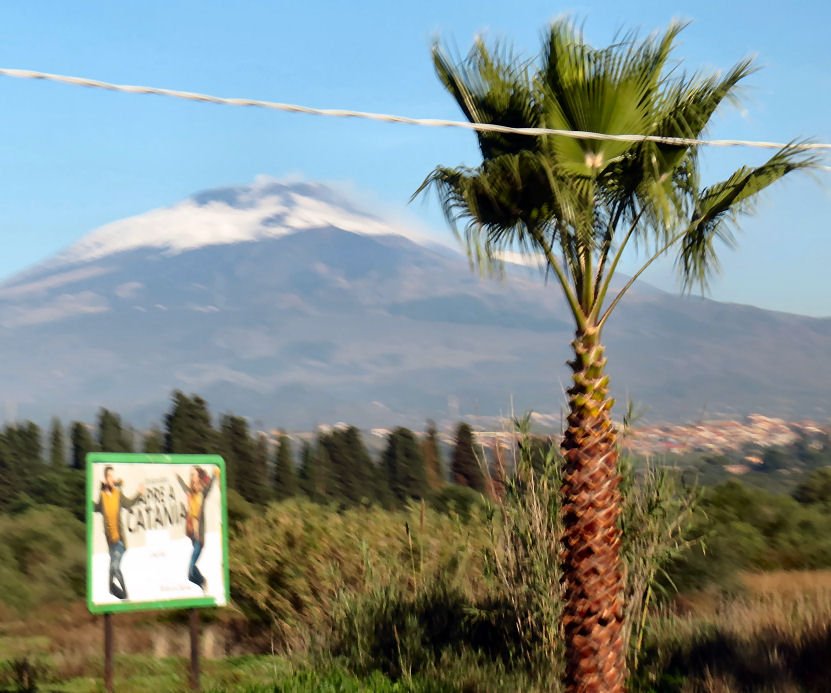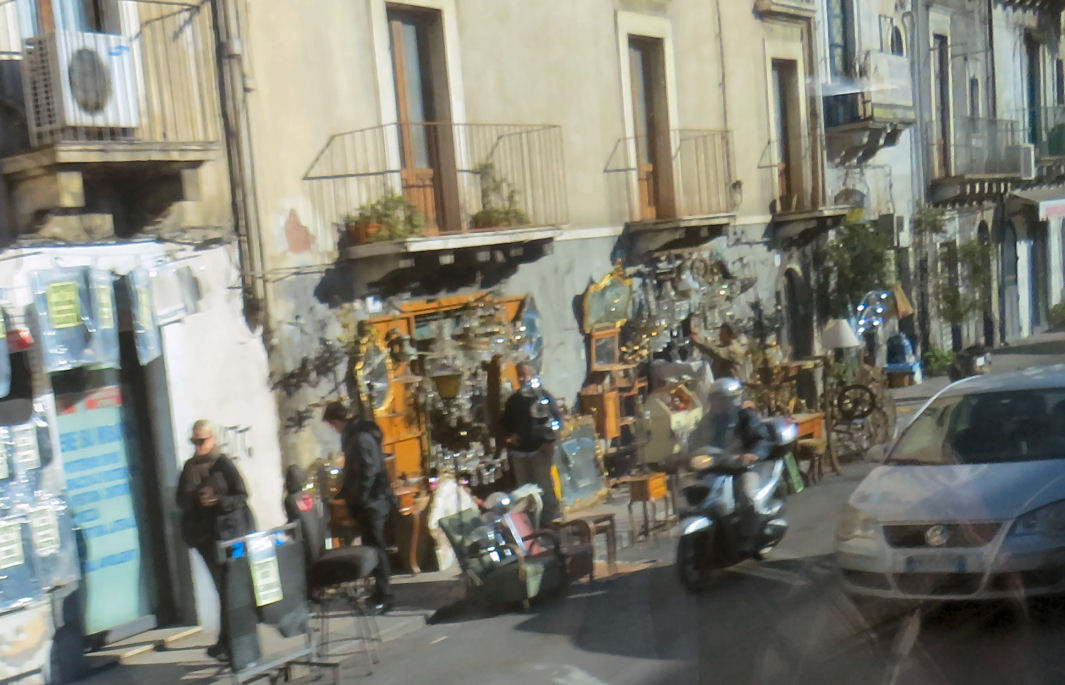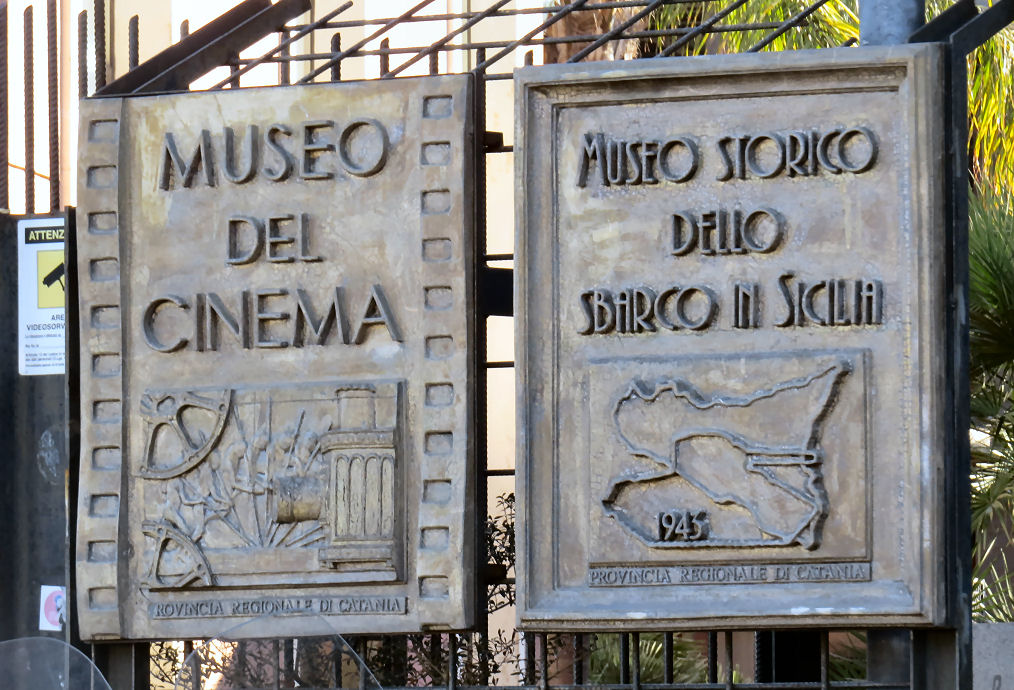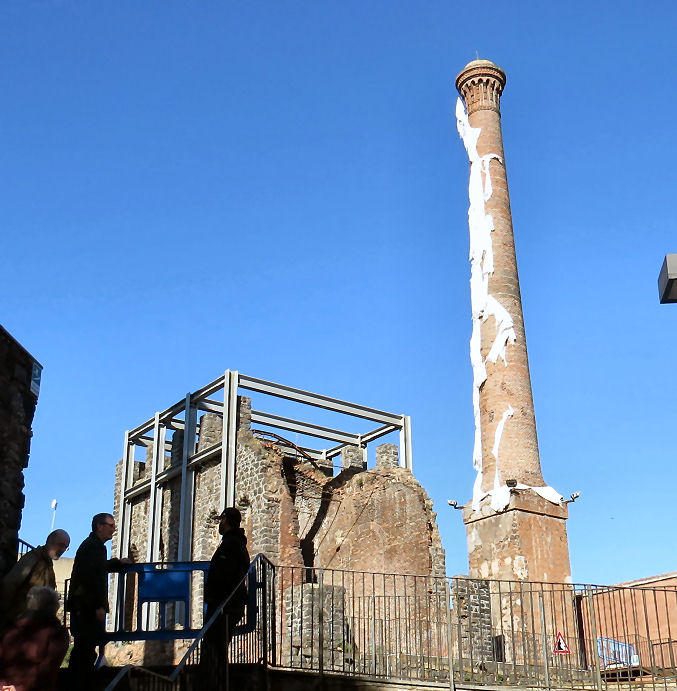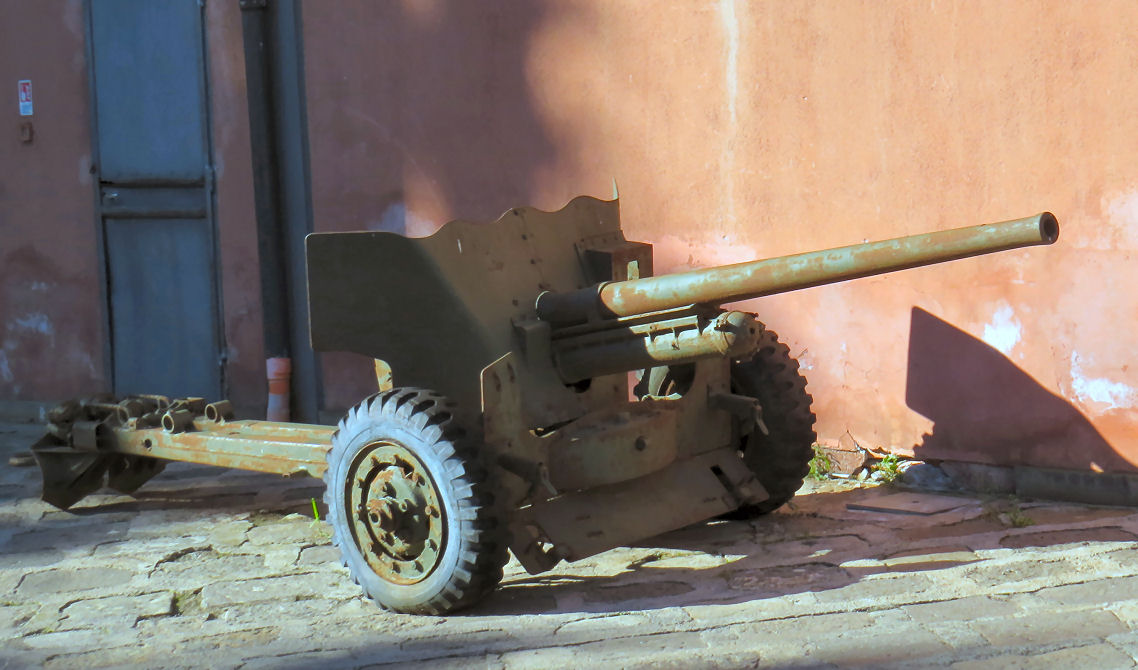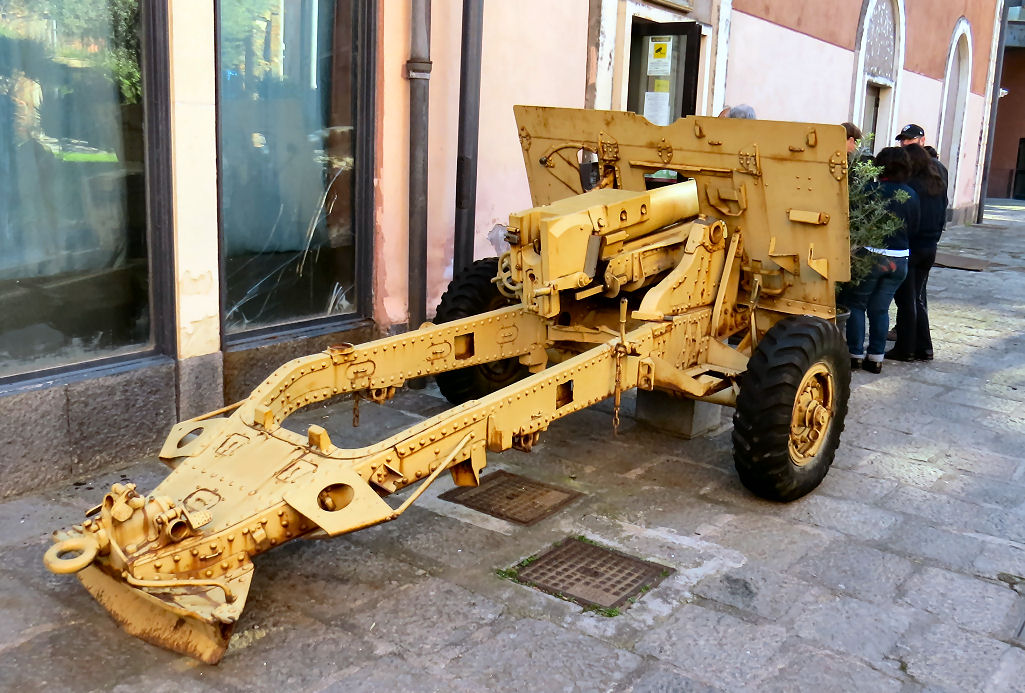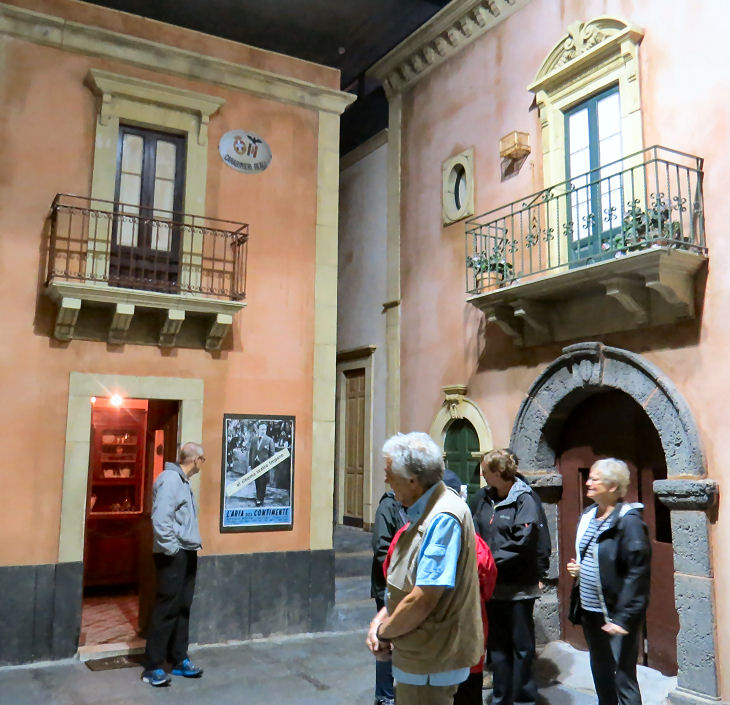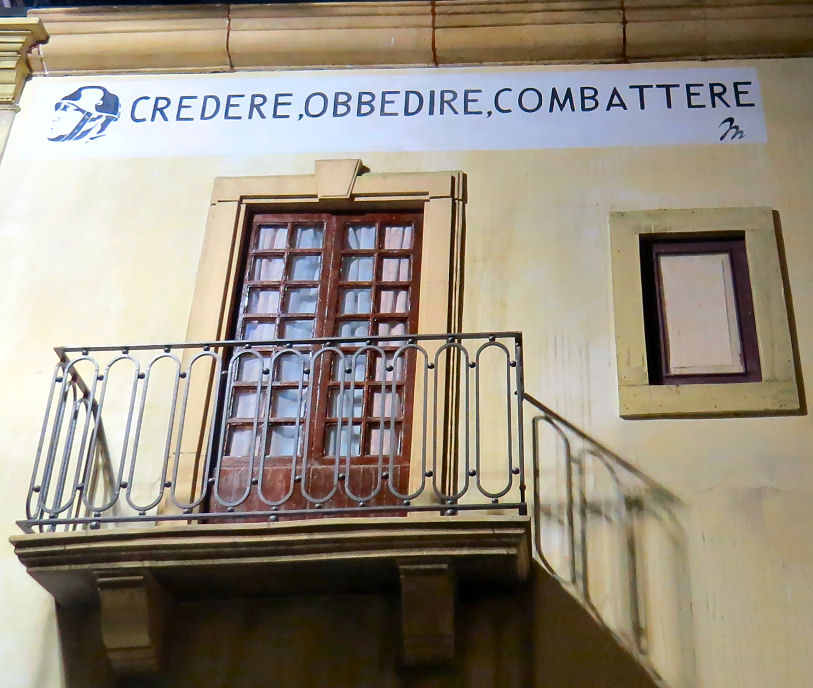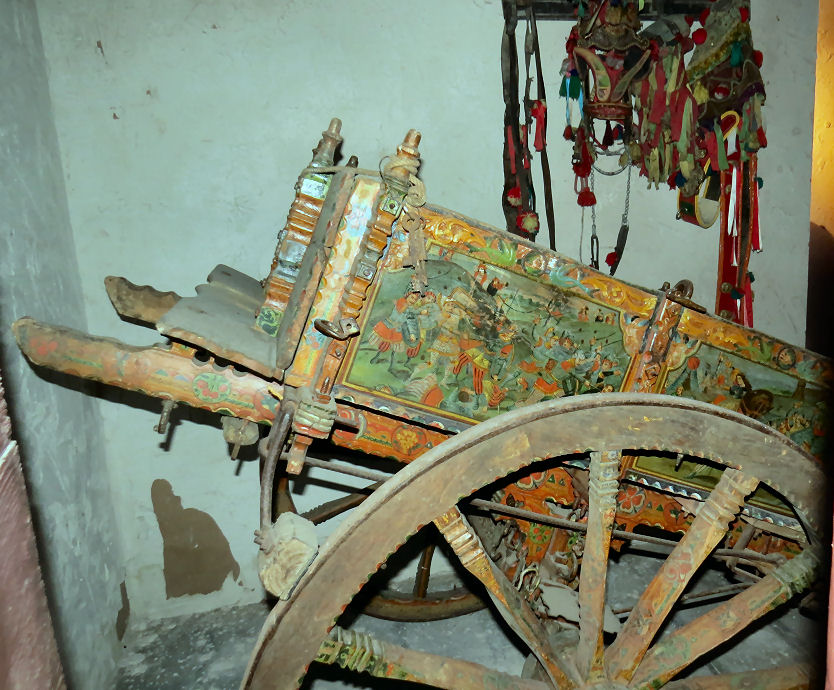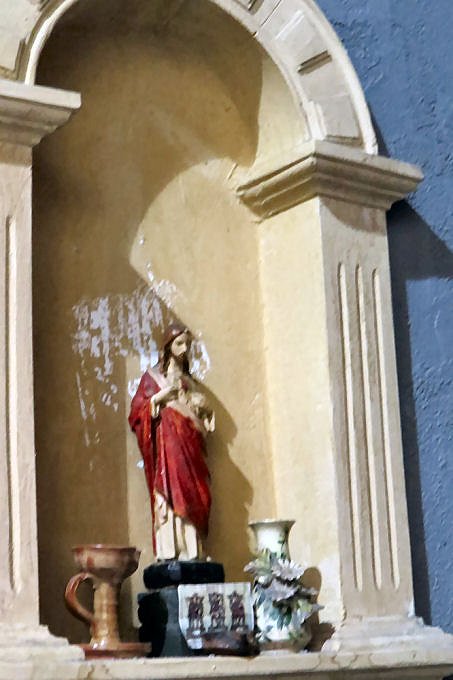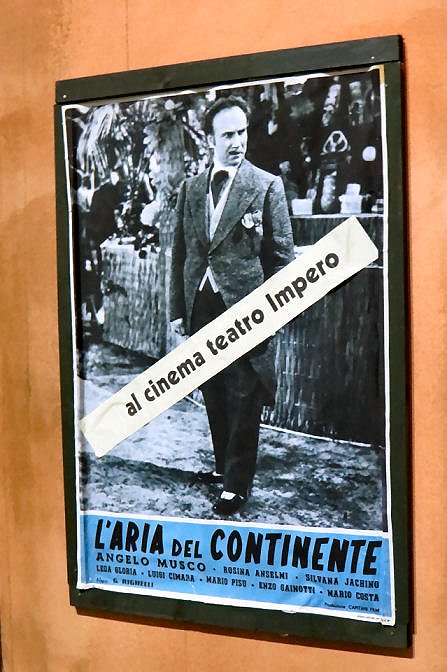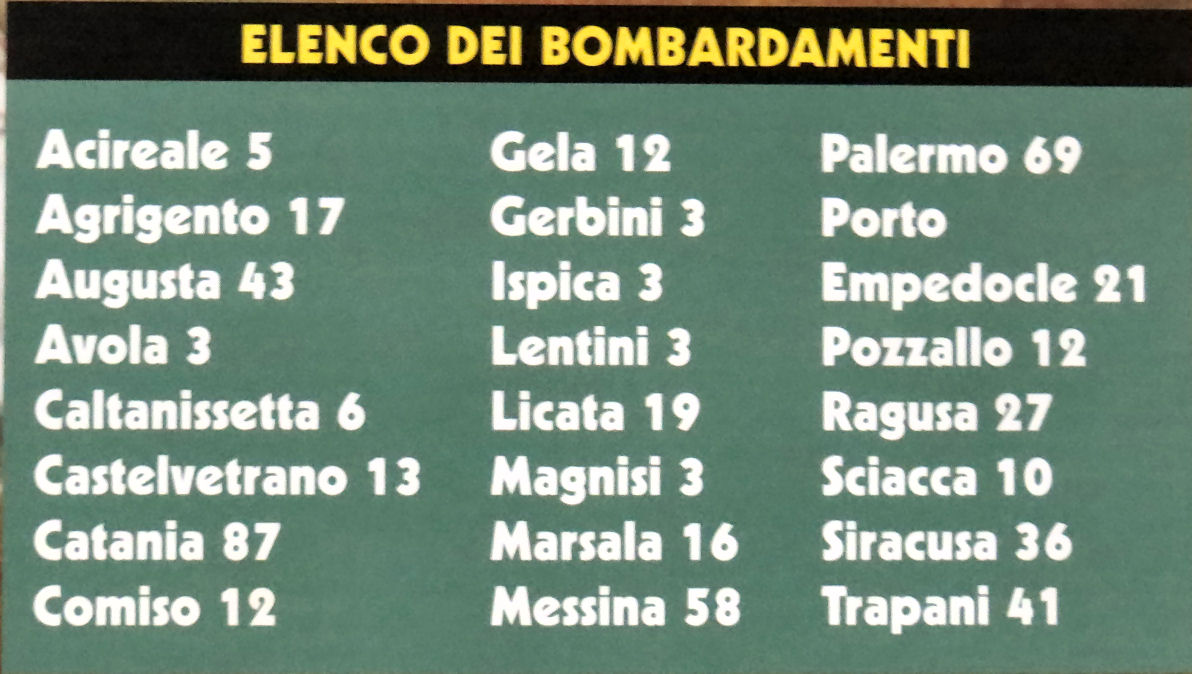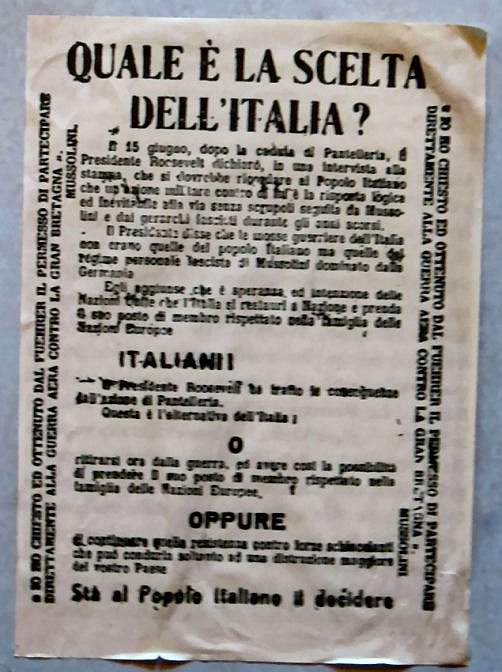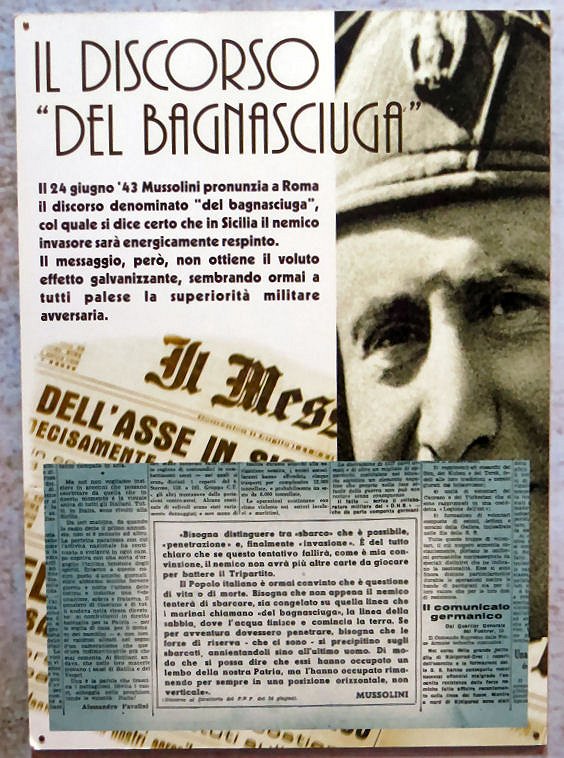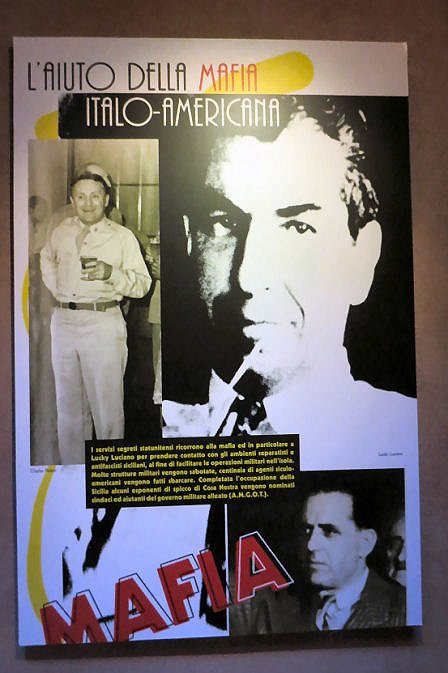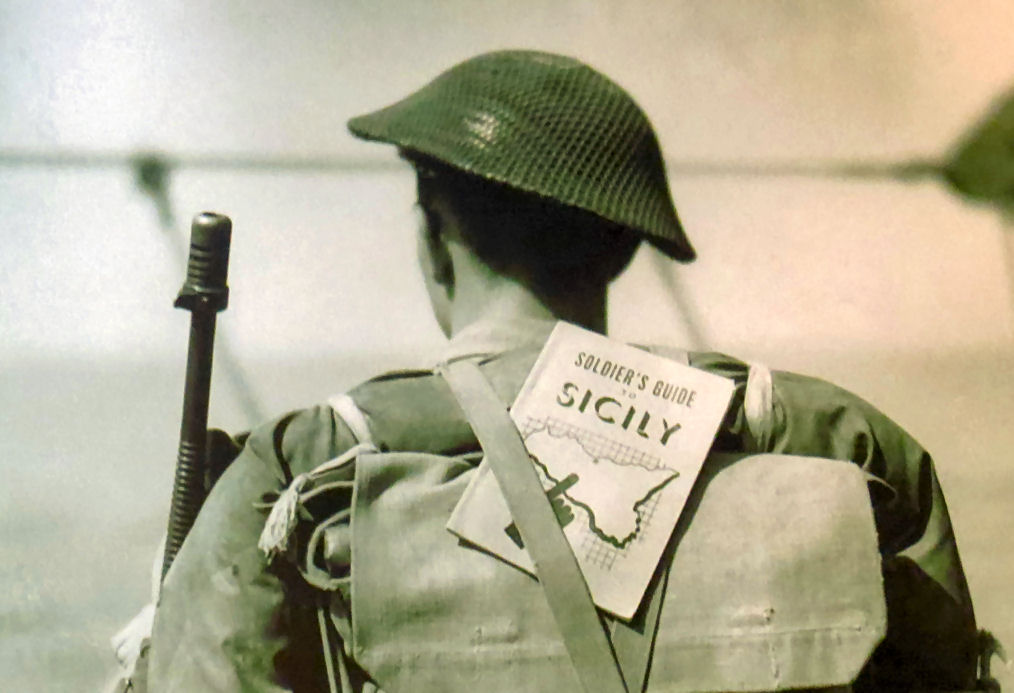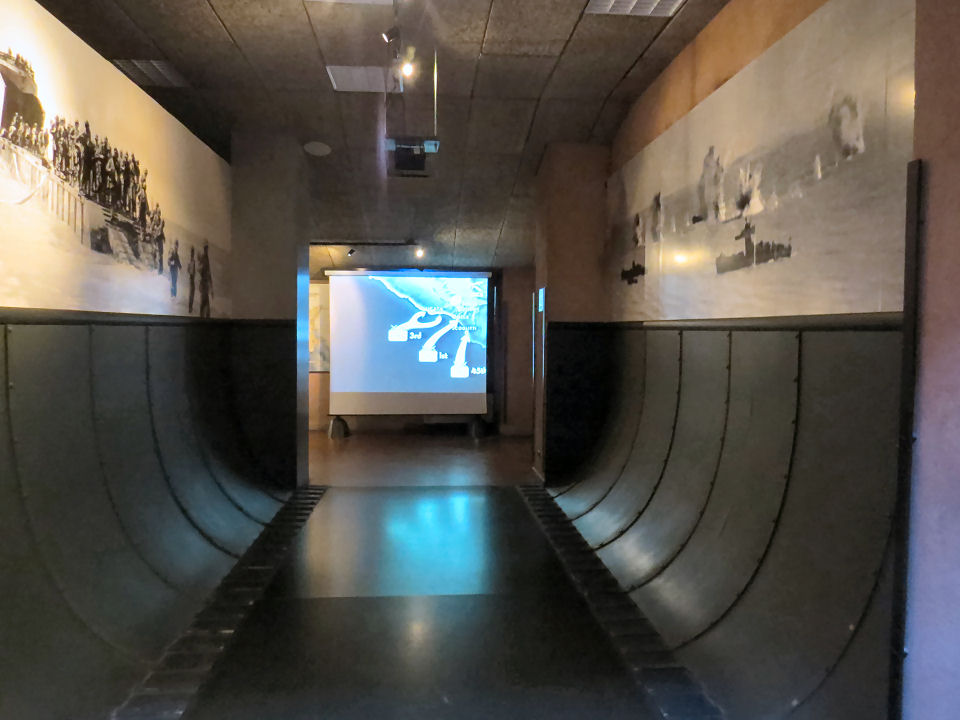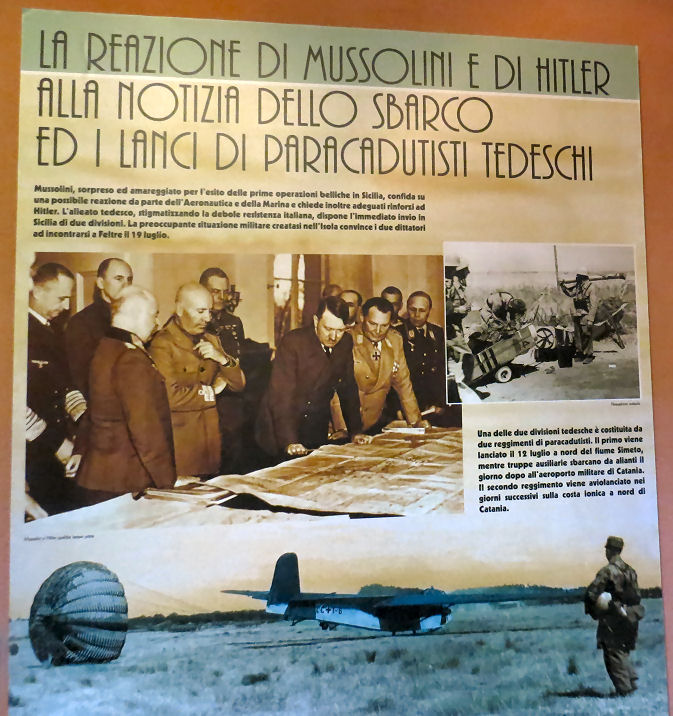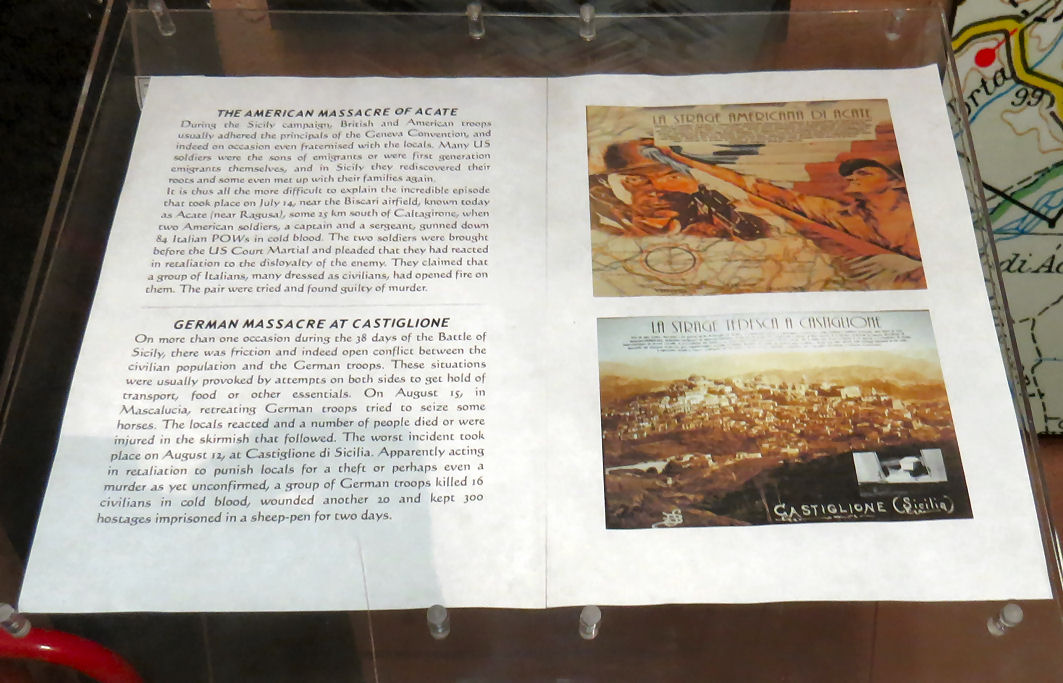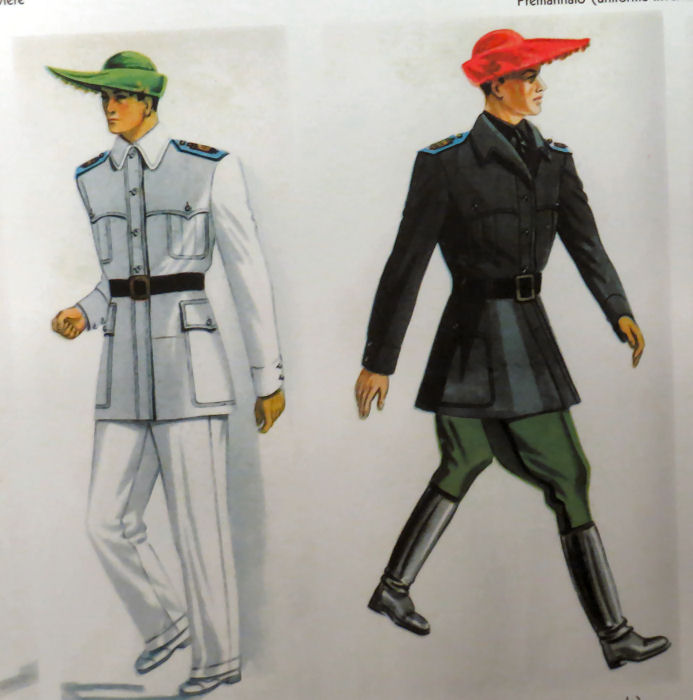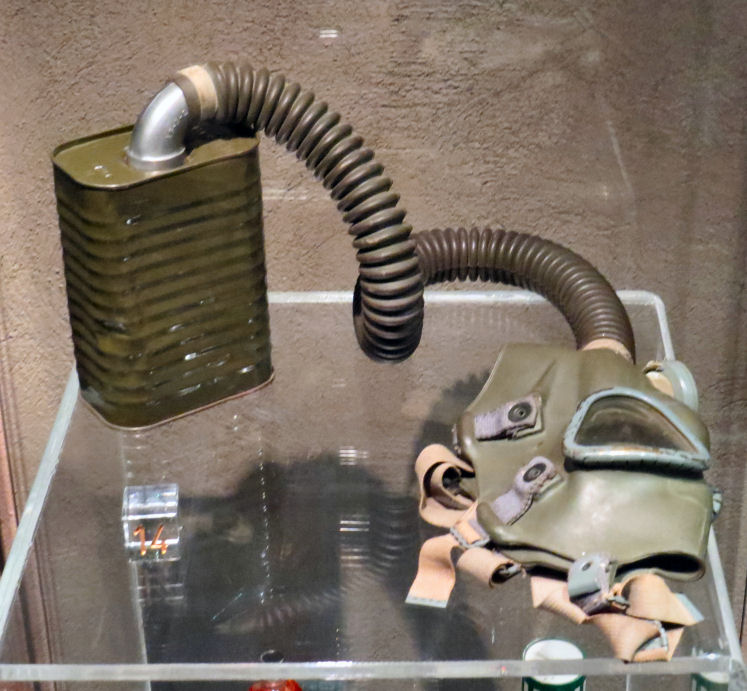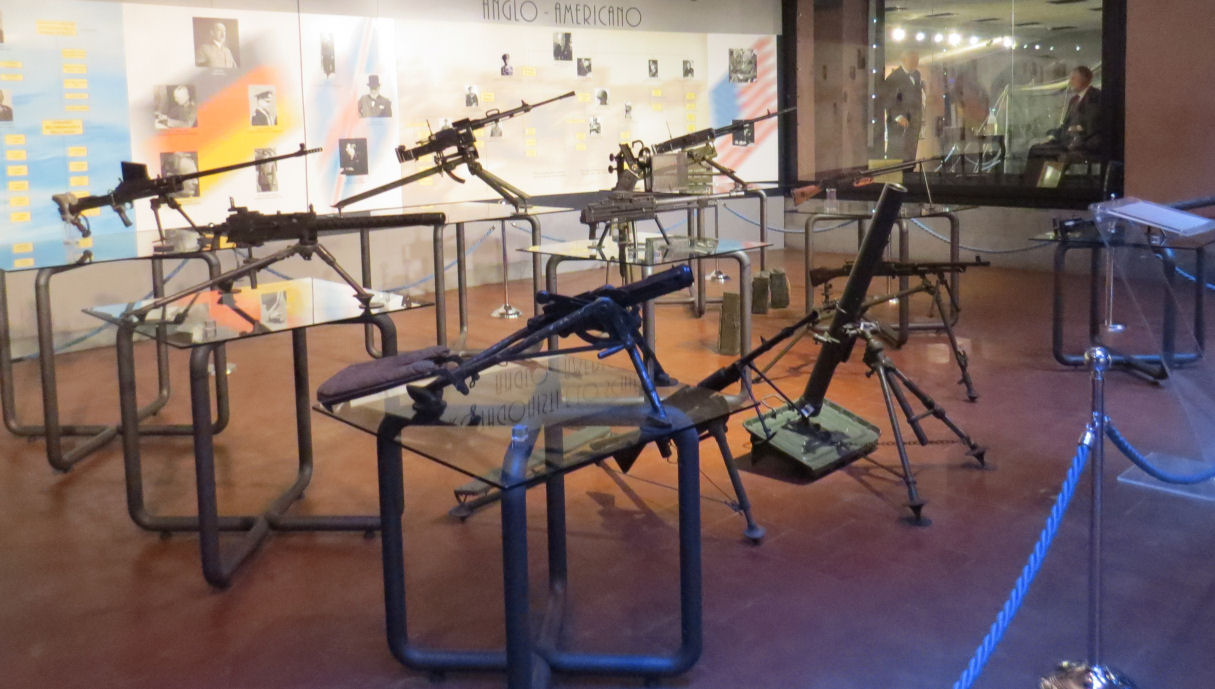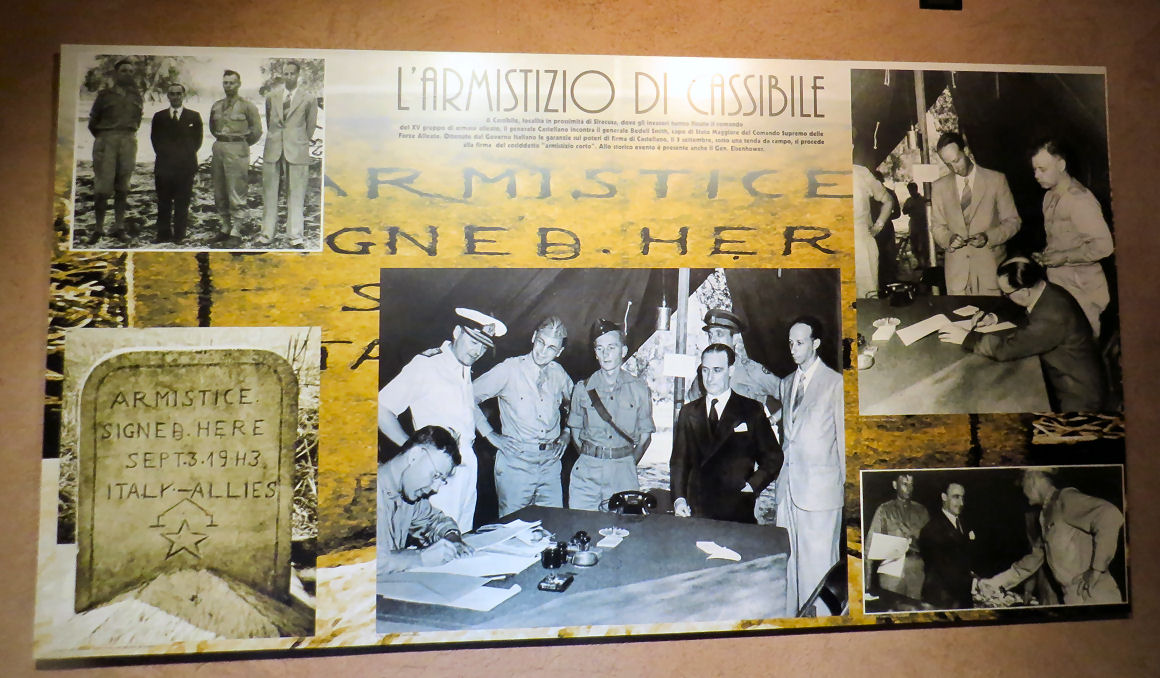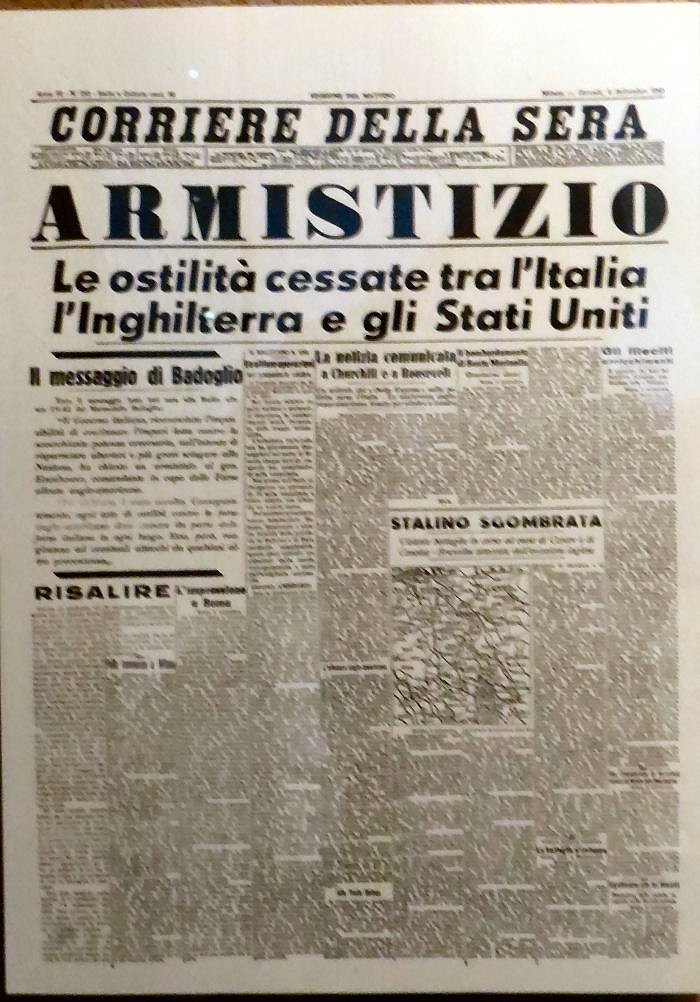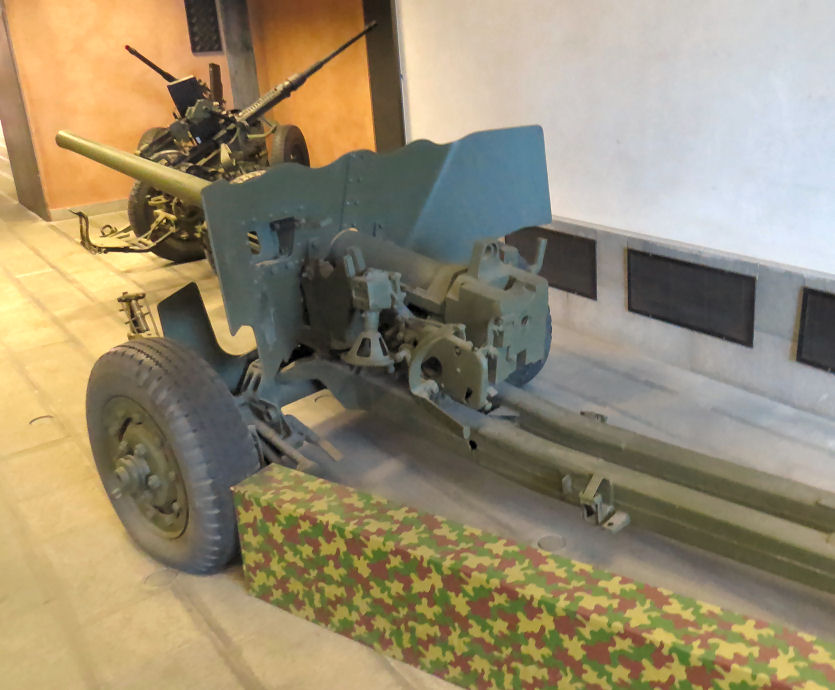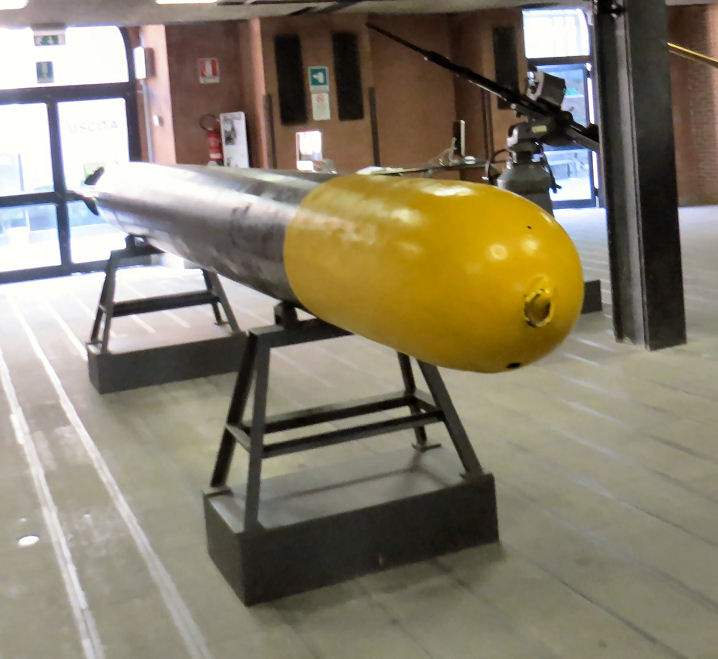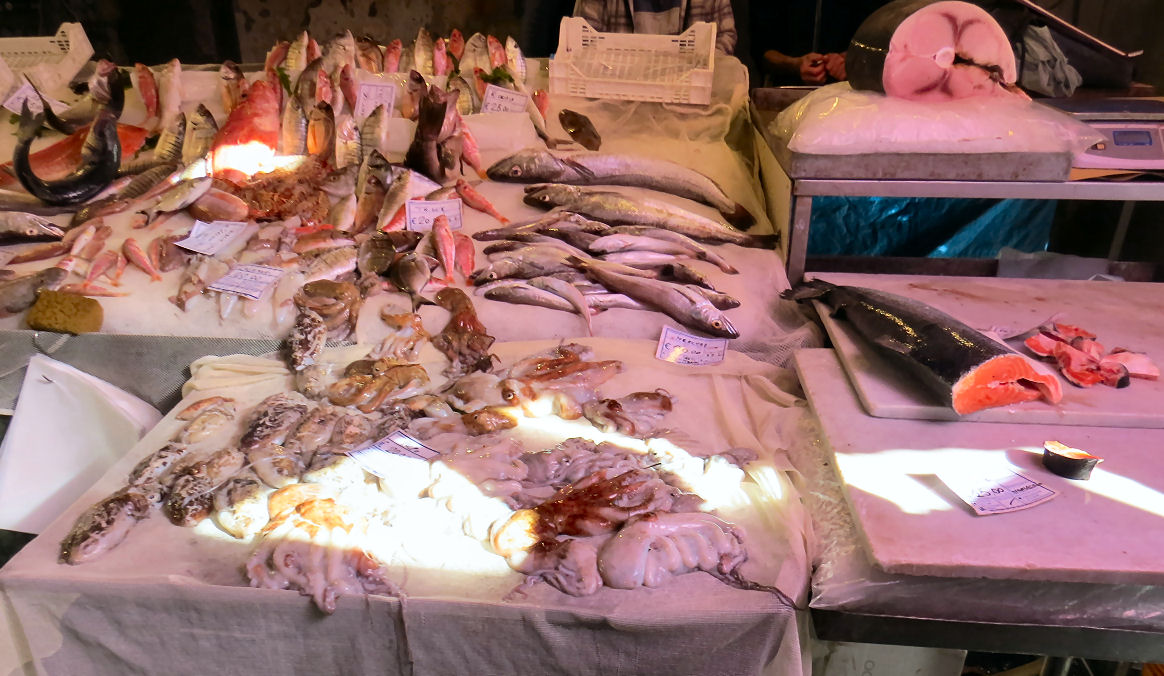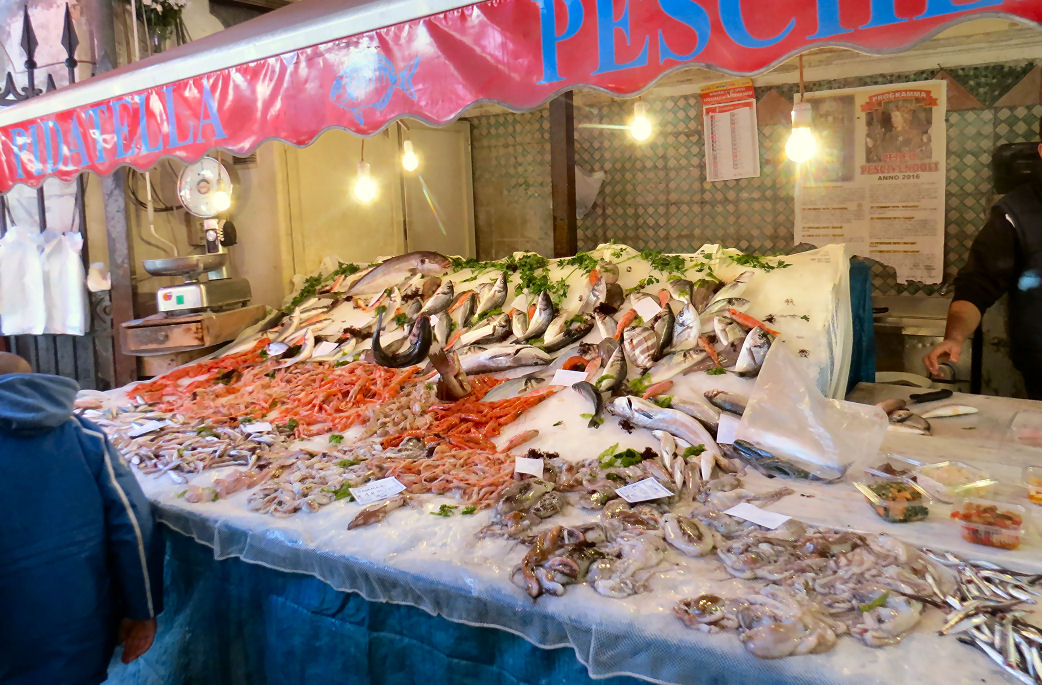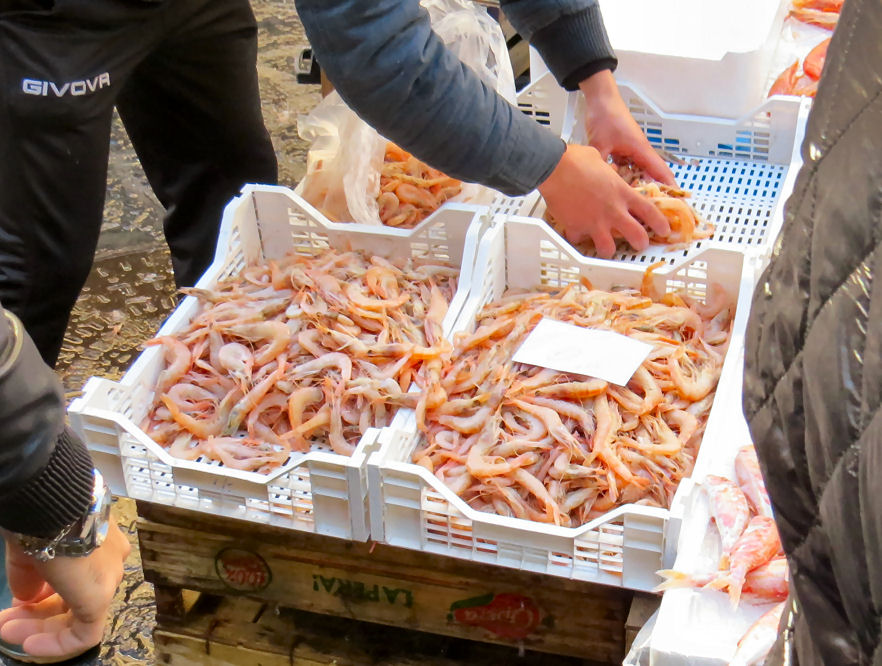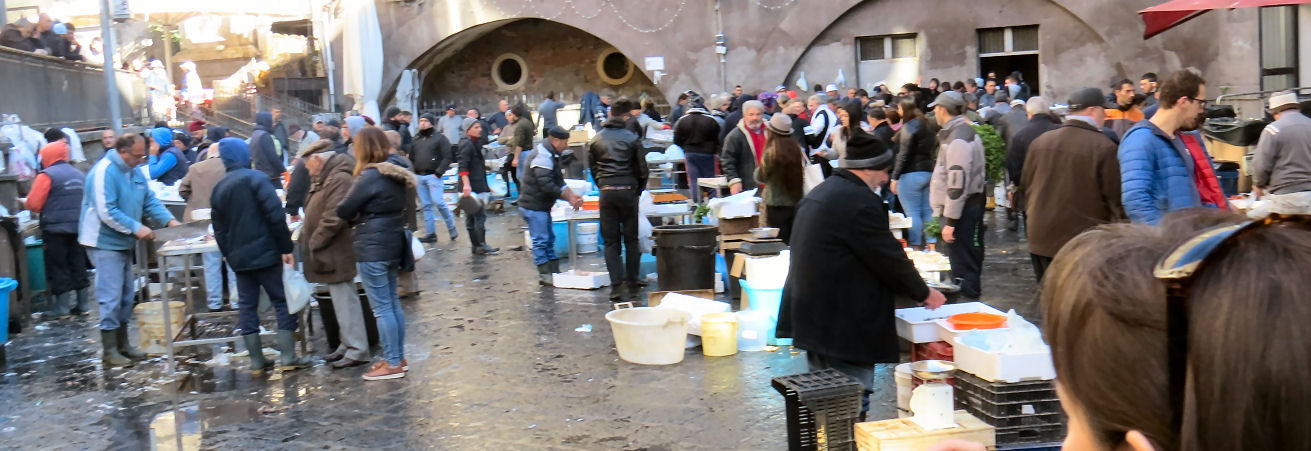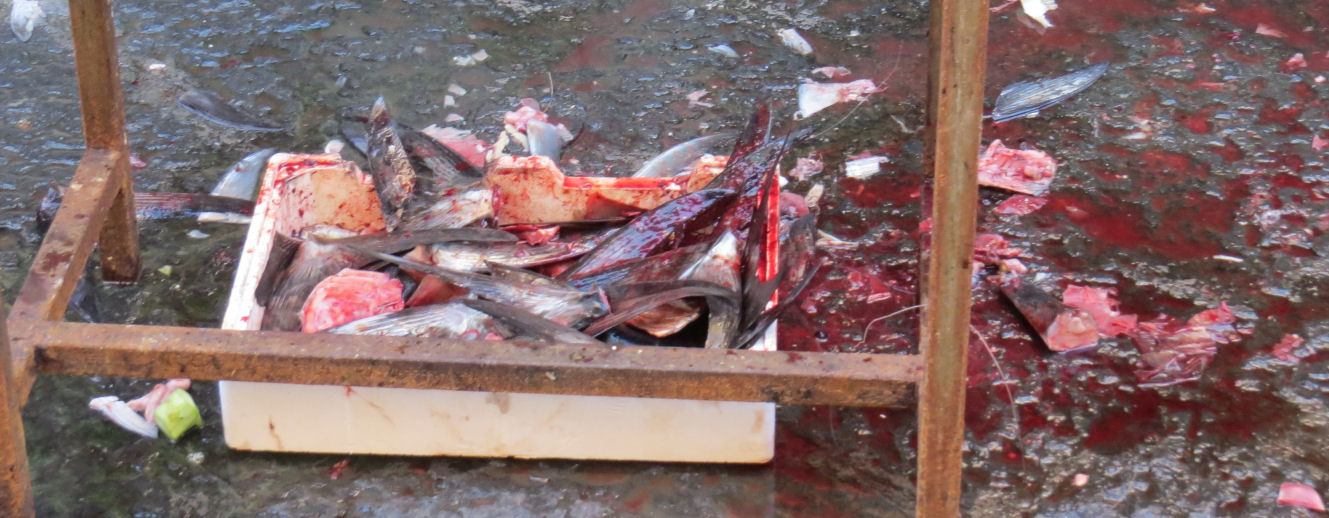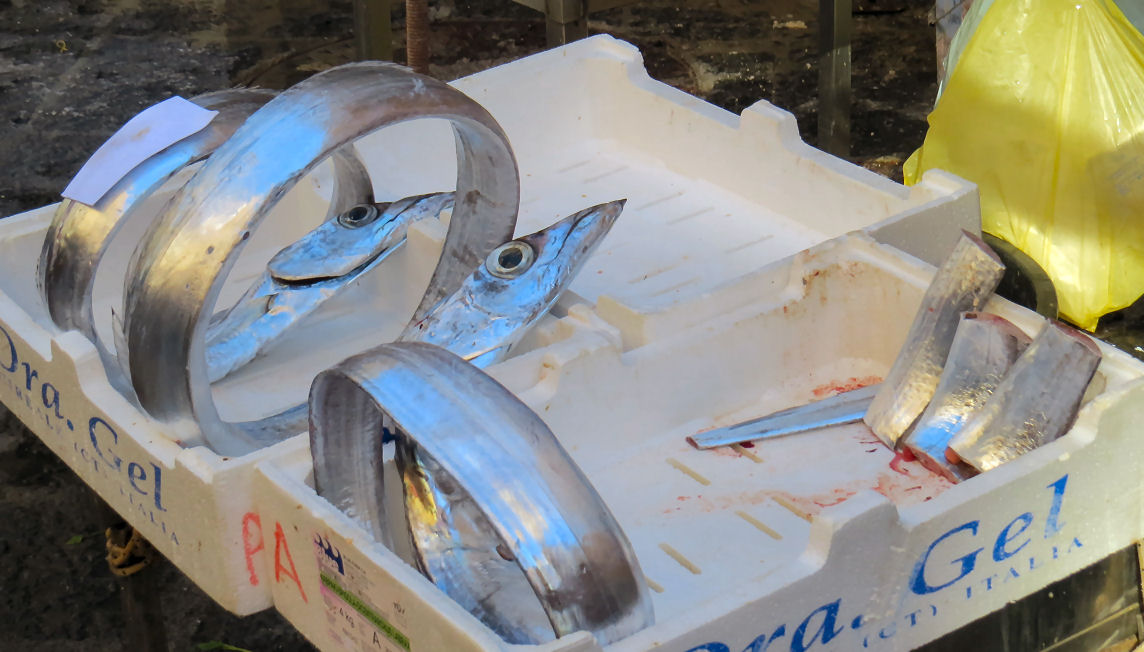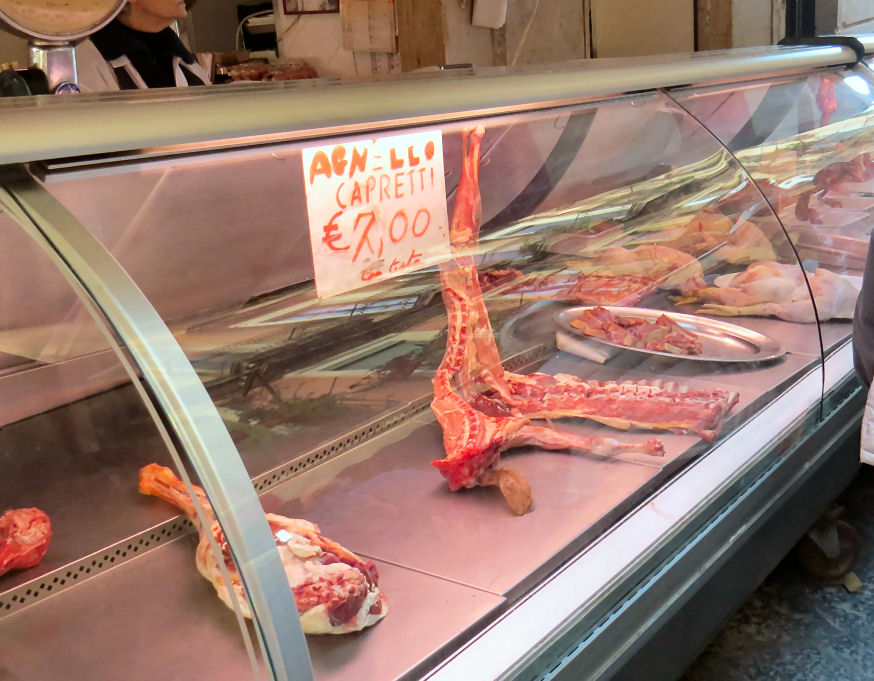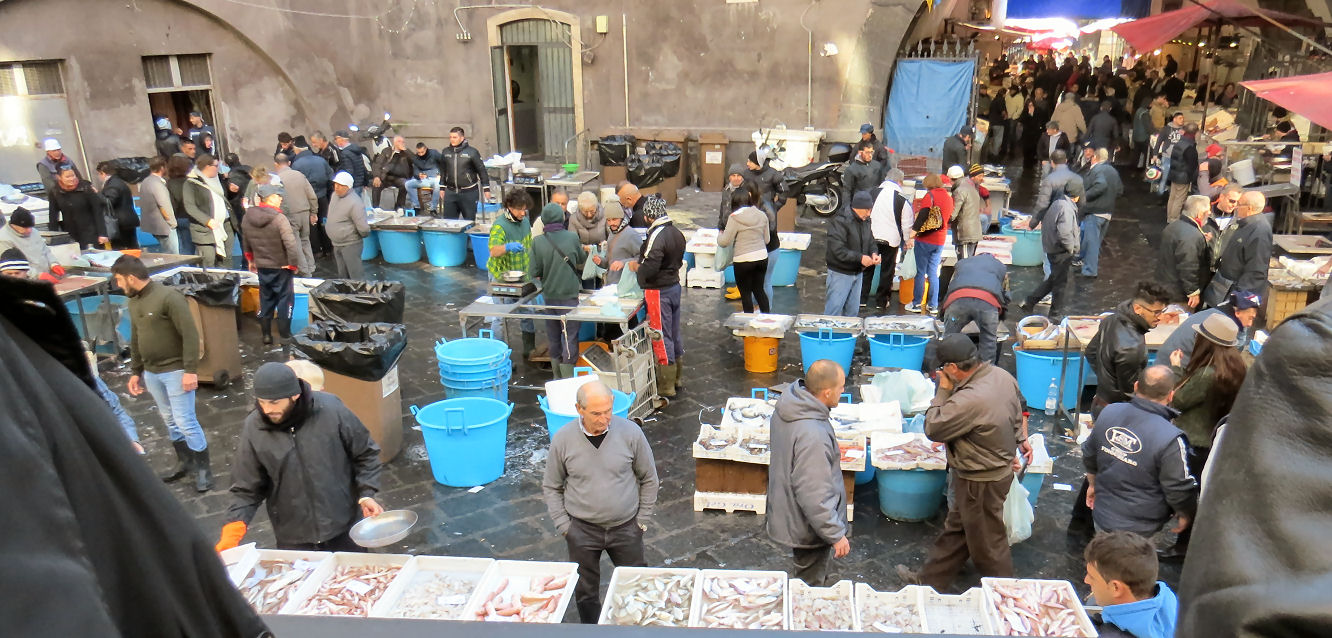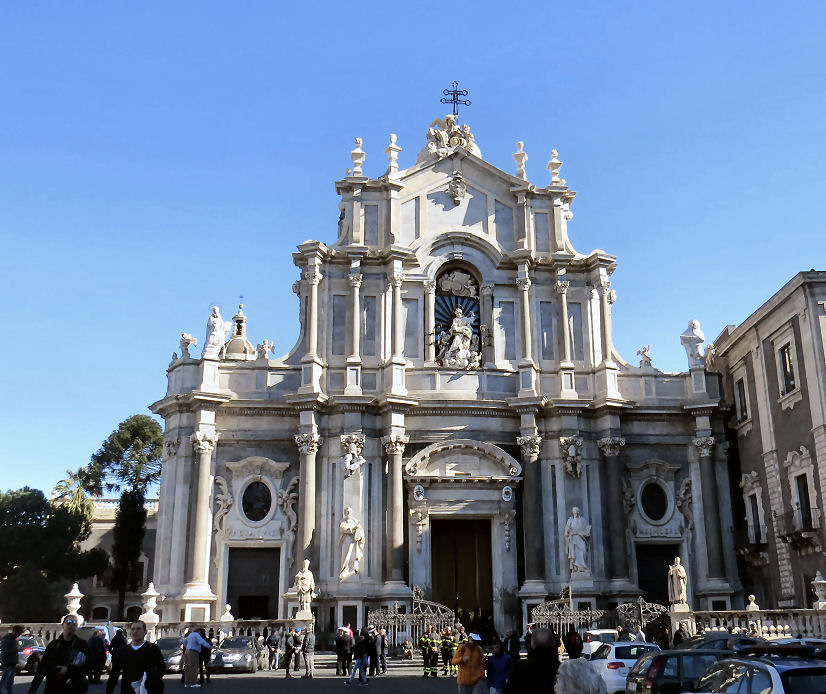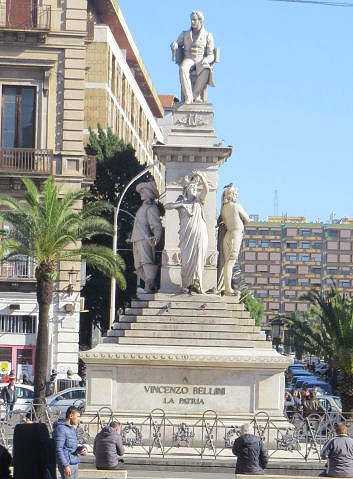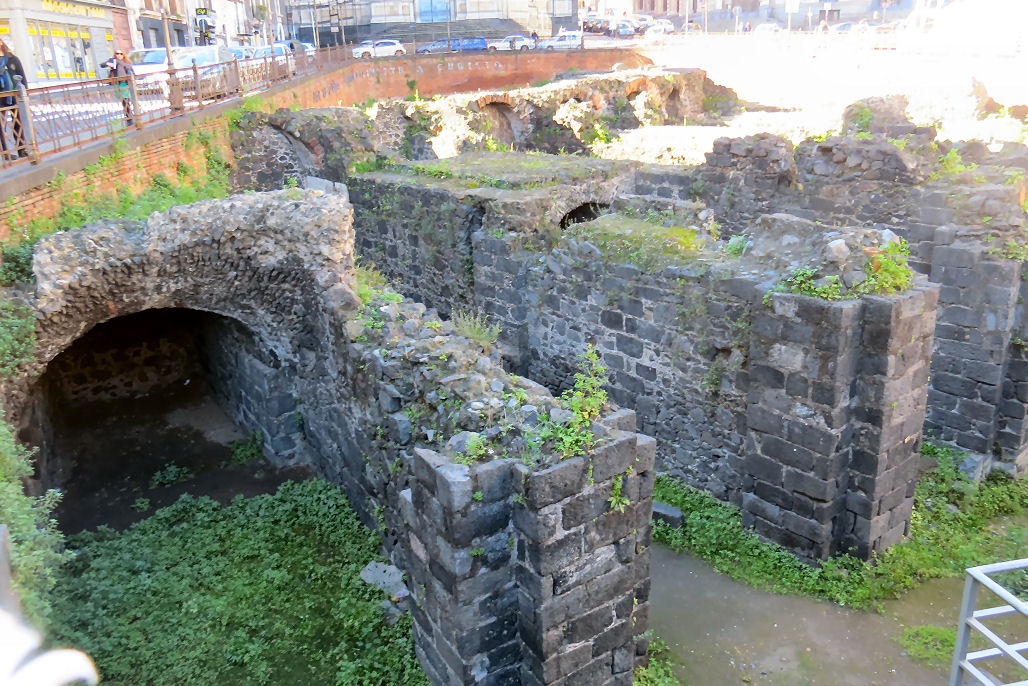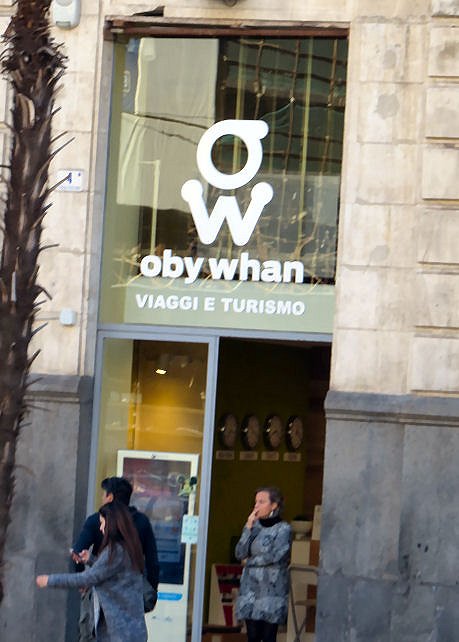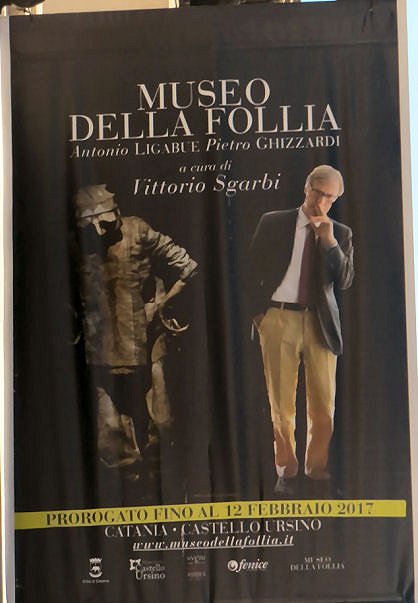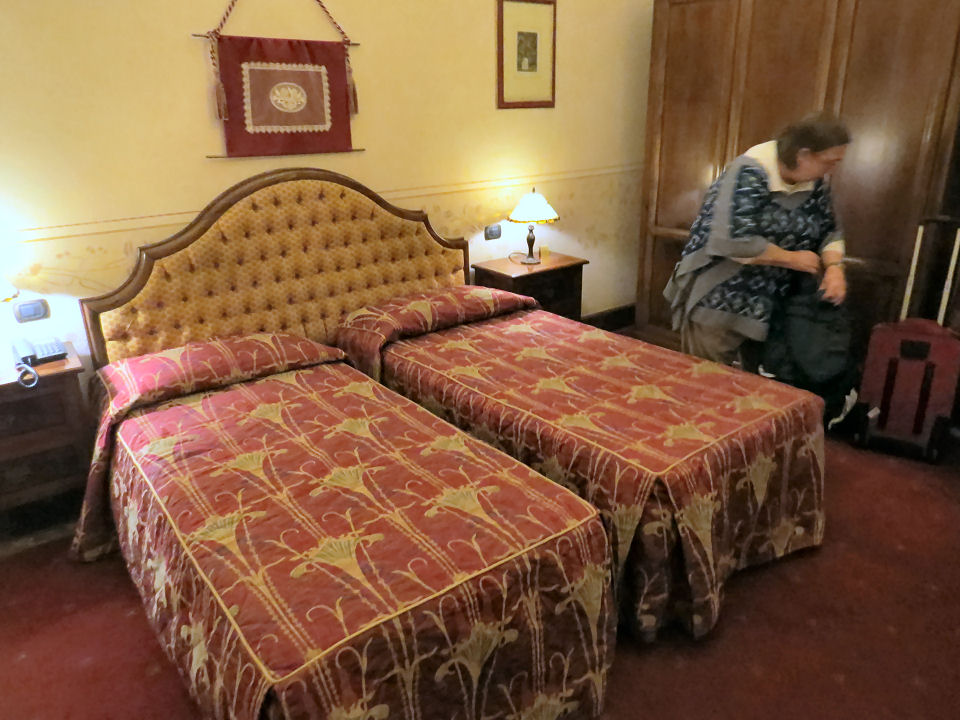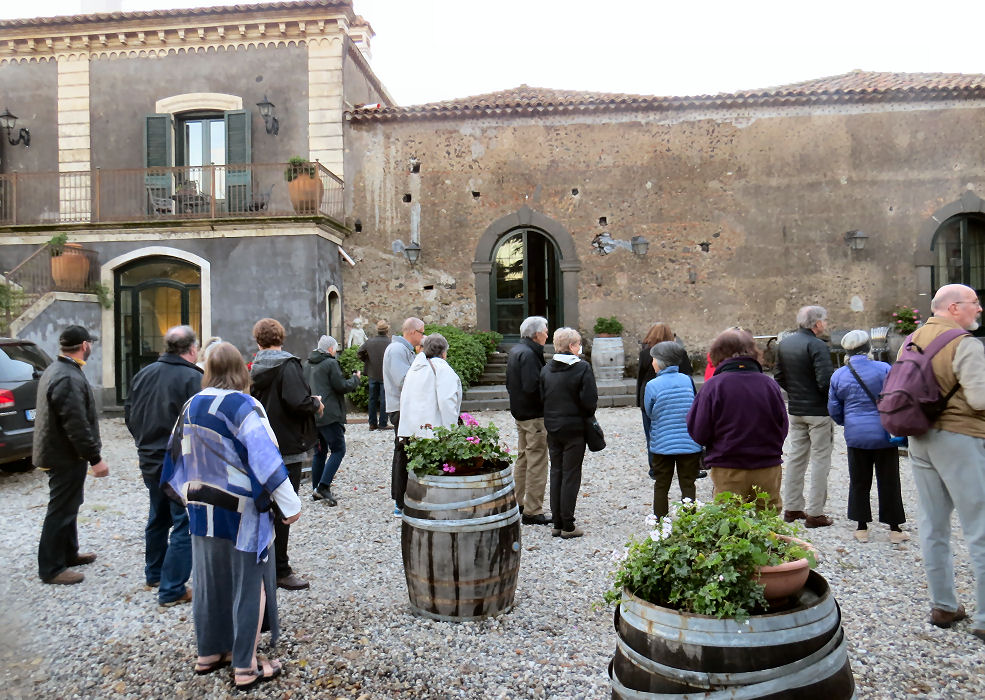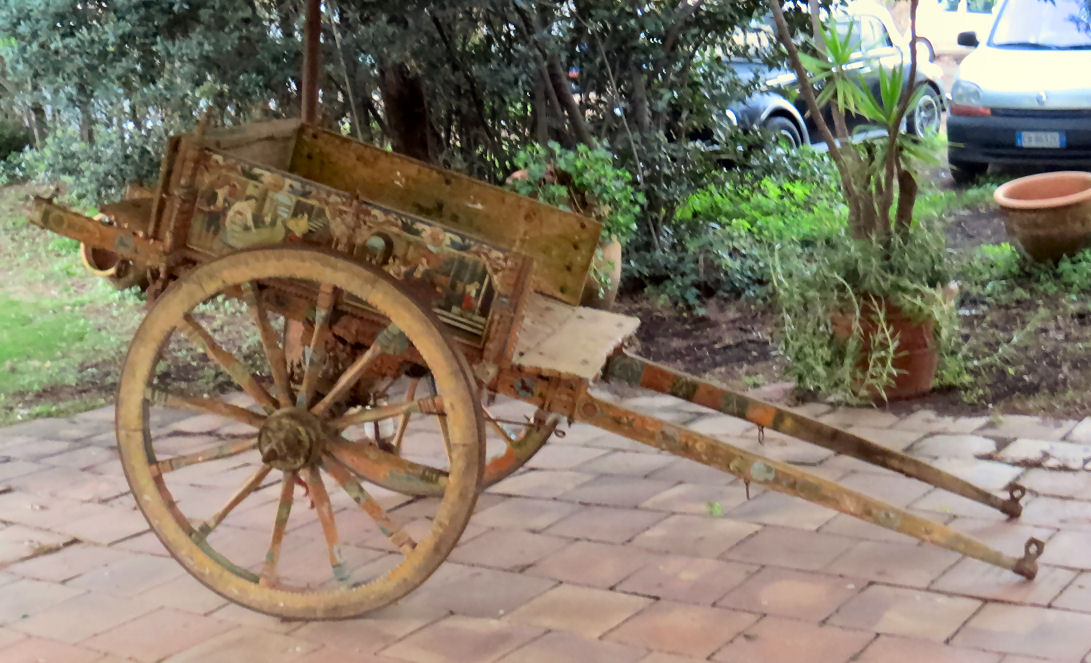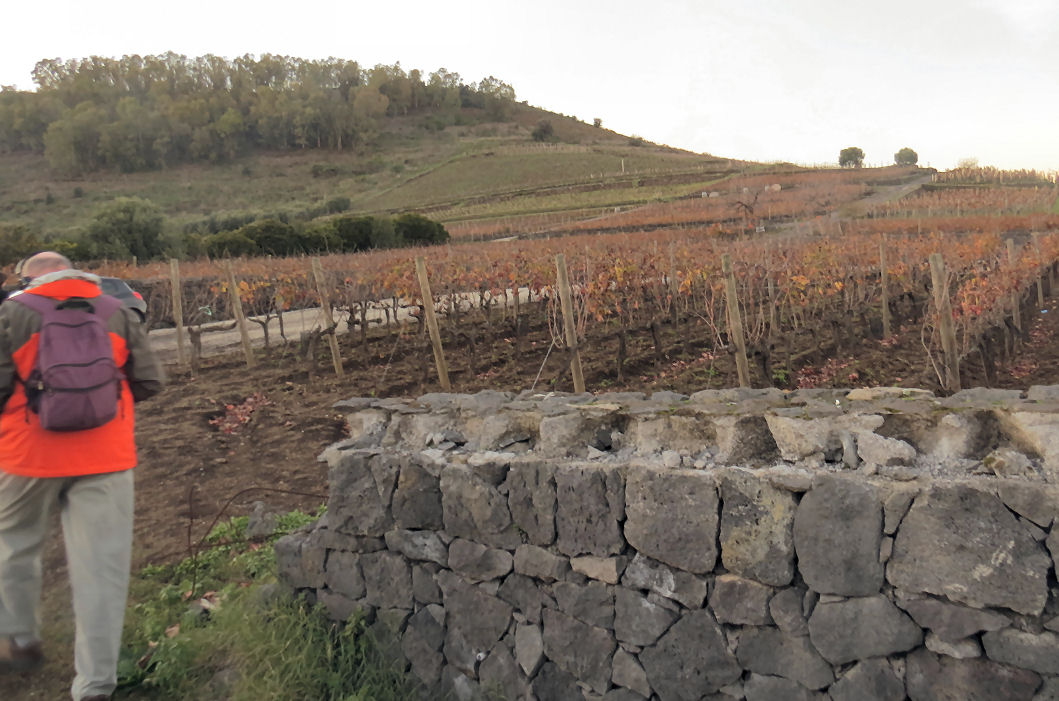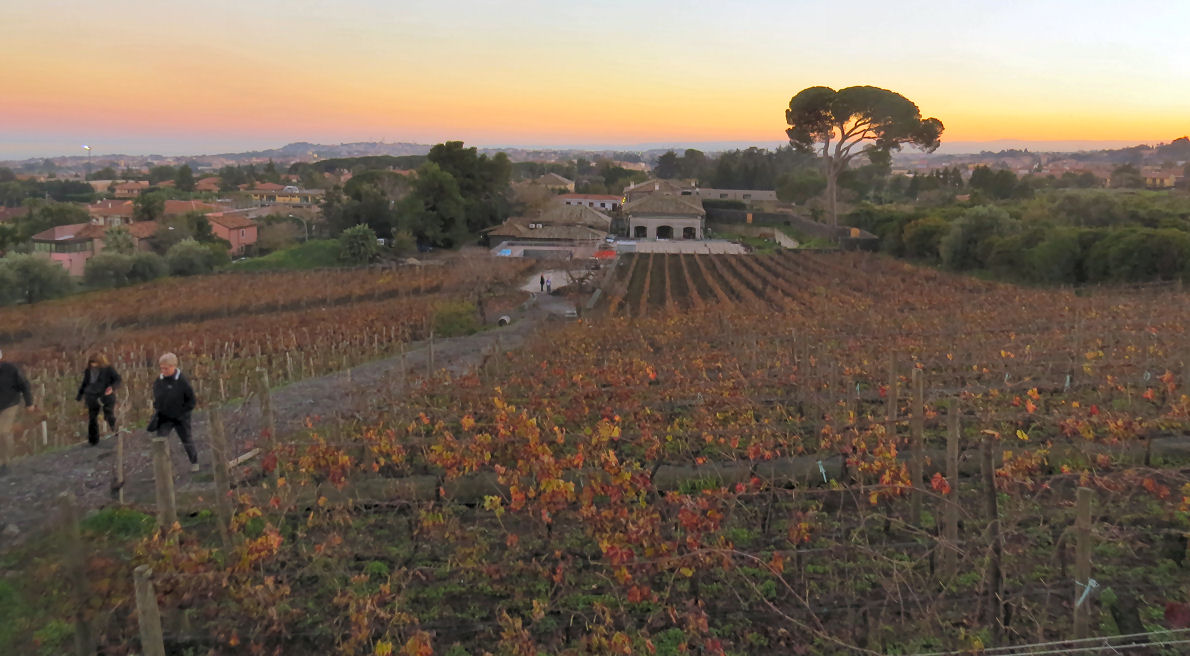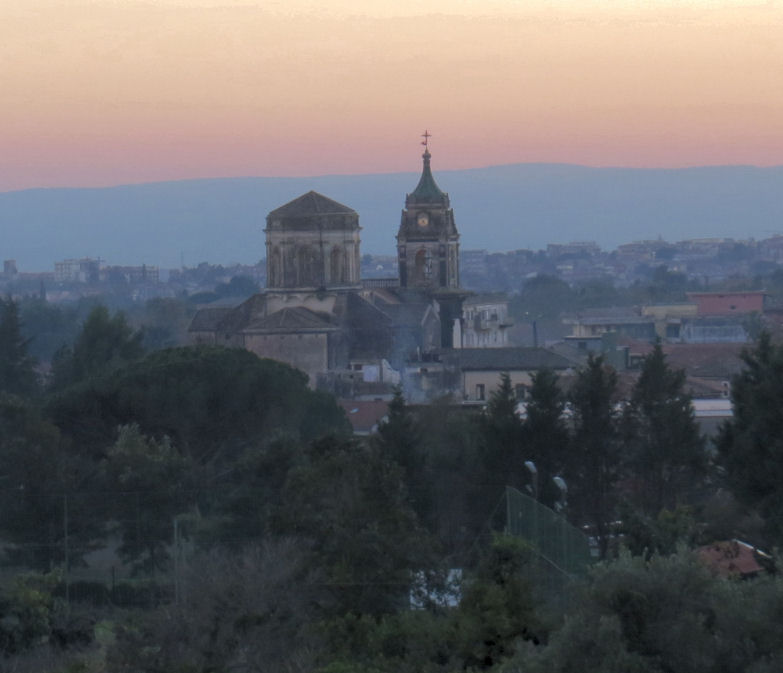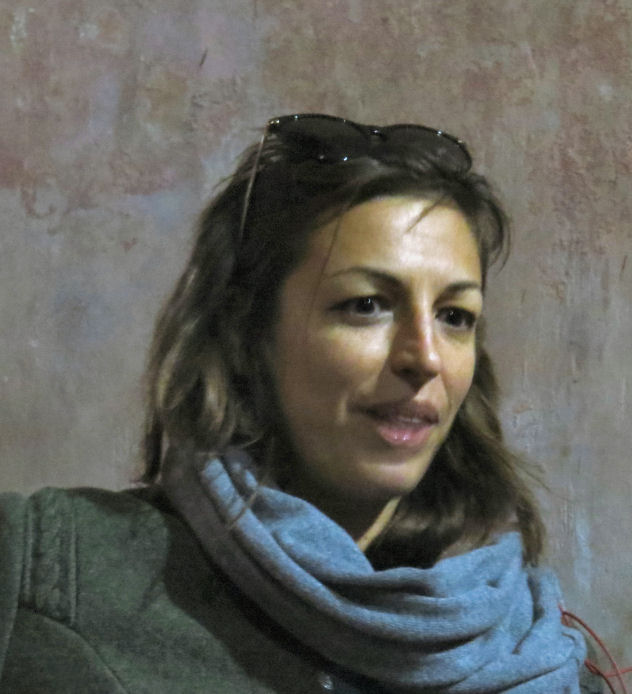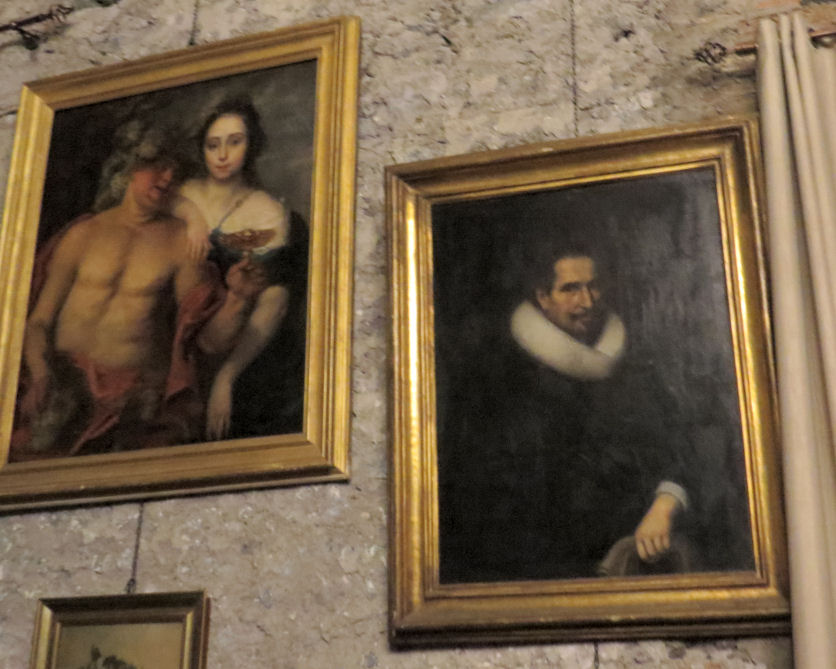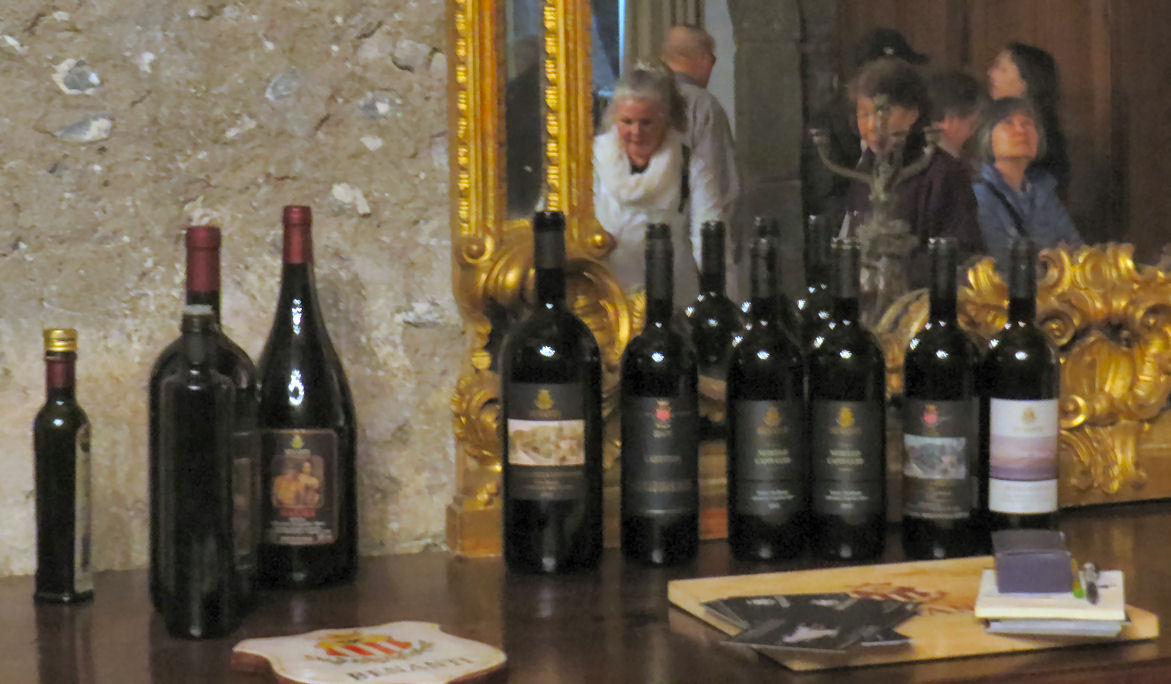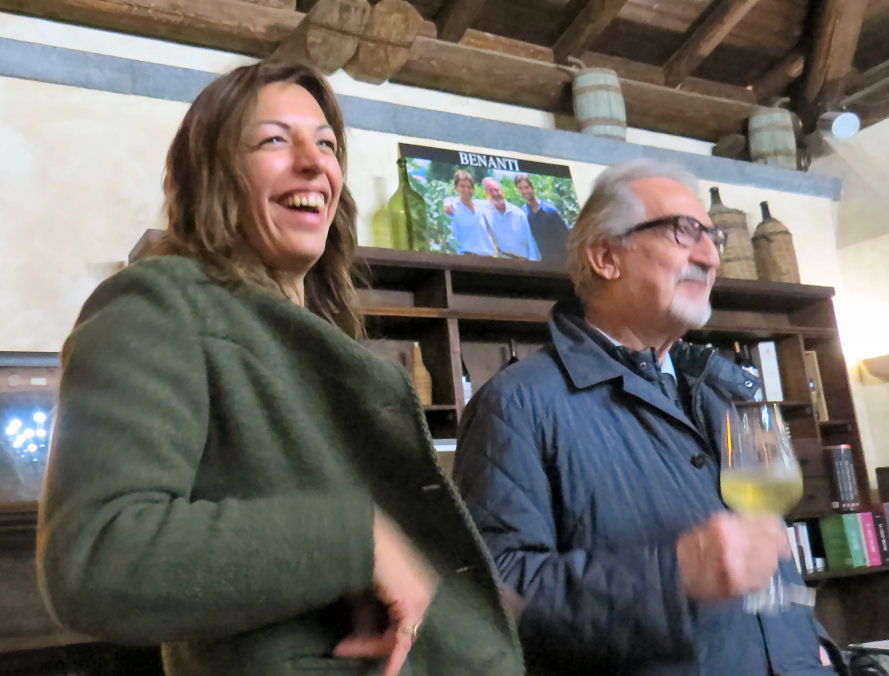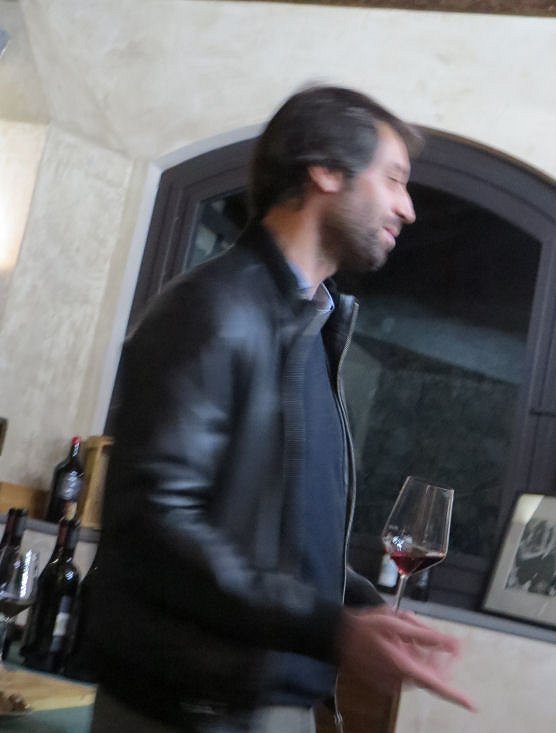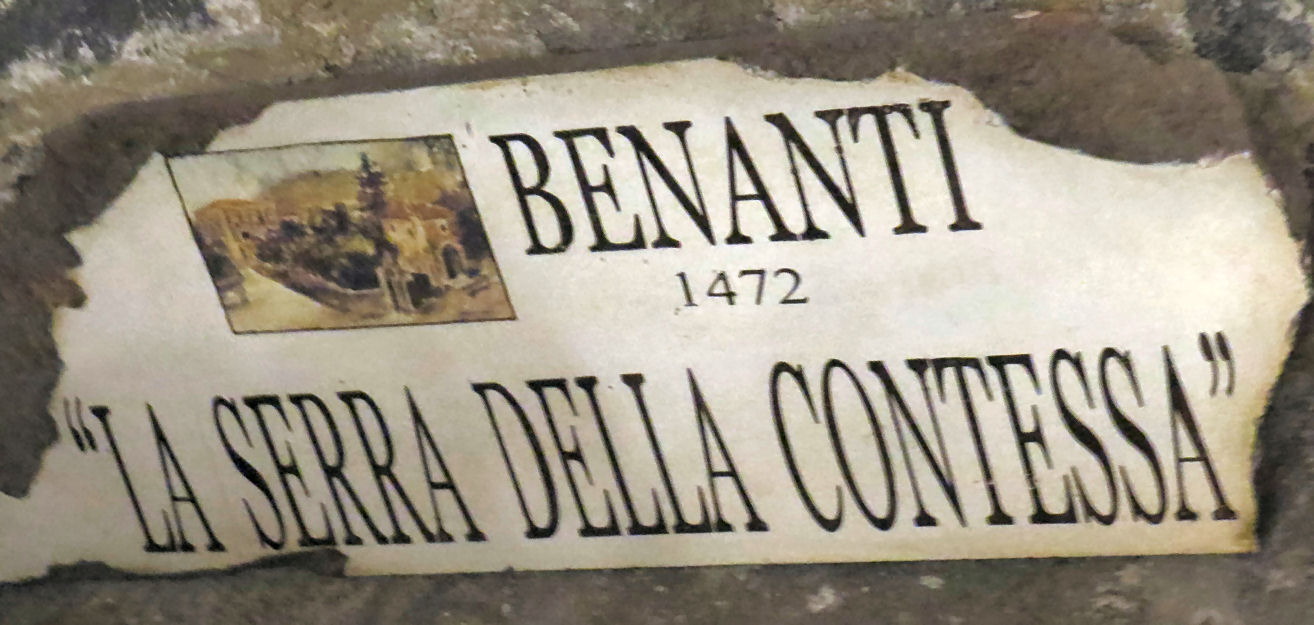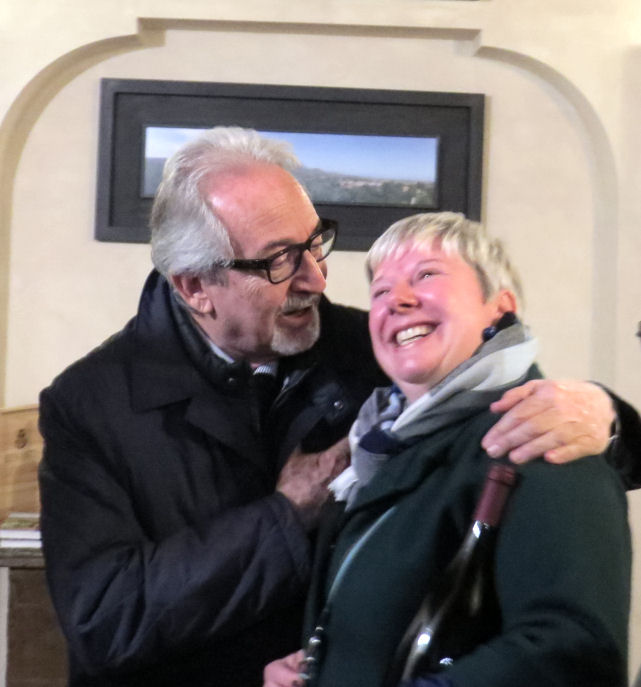I really enjoyed our stay at Domus Mariae. Although the lights in the room were, as in most hotel rooms, much too dim for old-timers like me, the lights in the bathroom were outstanding. The shower was quite good, too.
The weather was rather brisk on the last full day of the tour, which also happened to be the first day of December. I was in a pretty good mood as we took the elevator to breakfast. One side of the elevator was glass, which allowed us to see an area in which people stored their bicycles. I tried to take a photo of it, but the glare on the glass made it unusable.
Sue and I were lucky enough to eat breakfast with Giuseppe. His English was quite good. He told us that he lived in Taormina. Sue had been there on her previous trip to Sicily, and she shared a story or two with him. I had nothing to contribute. I spent the time sipping my coffee and eating a hard-boiled egg, a slice of ham, some grapes, and a bowl of cereal. The orange juice was delicious; I drank two glasses.
The plan for the day called for us to drive from Siracusa up to Catania. Our first stop was to be at a museum that told the story of the landing of the British, Canadian, and American troops in Sicily in 1943. We then would get a short tour of Catania, including its fish market, and check in to our rooms at the Liberty Hotel. Giuseppe would then drive us up to the small mountainside town of Viagrande to the Benanti Winery, where a tour, a wine-tasting, and our final supper would be provided.
The journey to Catania took a little over an hour. I sat on the left (inland) side, which meant that I was able to get tantalizing glimpses of Mt. Etna when we neared Catania. There were probably good views of the sea on the other side, but I spent most of my time trying to get a shot of the volcano that was unimpeded by telephone and power lines and other unsightly constructs. A few came out OK.
The temperature when we boarded the bus was only 12° Centigrade, which translates to 53.6° Fahrenheit, but the sun was out.
Susanna used the time on the bus to tell us a little about Mt. Etna, which is an active volcano that was not considered very dangerous. Its height was 3,323 meters. Etna was home to the world's largest horse chestnut tree, which was fifty-two meters in circumference. The tree was estimated to be over two thousand years old.
Susanna then turned her attention to our first stop, which would be at a museum dedicated to describing and explaining the landings by the Allied troops in World War II. The invasion occurred on the southeast part of the island on July 10, 1943. The 8th British Army under Montgomery landed at Avola and Cape Passero. The American 7th Army commanded by Patton landed at Gela and Licata.
The Allied forces met in Casablanca in Morocco. They planned the invasion, which was called Operation Husky, in the late spring of 1943. The plan included a misinformation plan to convince the Fascists and Nazis that the Allies' target would be Greece. This was implemented by allowing a corpse with a briefcase to be washed ashore in Nazi-held Spain.
On July 10 2,700 ships were launched by the Allies. At the time Sicily was defended by both Italian and German troops. The Italians performed very poorly, and the Germans were outmanned and outgunned by the British and Americans. The Americans were also assisted by the mafia, which used its many connections on the island to provide support and information.
The British were stopped short of Catania, but the Americans drove to Messina from the west. The latter caused the Germans to evacuate, which cleared the path for the British. By August 17 the two armies met in Messina, and the mission was successfully completed. The Germans were able to evacuate most of their troops and equipment across the straits to Reggio Calabria.
The museum was one of two located in a former industrial park called Le Ciminiere (chee meen YAY ray). The other museum was dedicated to Italian cinema. Susanna told us that she thought that the equivalent English phrase was “the chimneys.”
When we arrived at the park, we were allowed to use the facilities before entering the museum. I was astounded to see eight urinals in the men's room. I had not been keeping close track, but I could not remember seeing even one since the airport in Fiumicino almost two weeks earlier.
I got a chance to tell Susanna that the really tall industrial chimneys were usually called “smokestacks,” at least in the U.S. I had enough time to take a few stark pictures of the buildings that were in the park, but not associated with either museum. Two large cannons were also on display outside of the museum.
Traffic in the museum moved in one direction. The first step was to view the usual film in a very small uncomfortable room. In my opinion the best part of this film was the opening shot of an Allied soldier with a book called Soldier's Guide to Sicily strapped to his backpack. I tried to take a photo of it, but that turned out to be unnecessary; the image was from a poster that was displayed later in the tour.
The walking part of the tour began in an area that was designed to show what life in a Sicilian town in 1943. Truth to tell, it did not seem so different from some of the towns we had seen in 2016. Electrical equivalents had replaced mechanical devices, but otherwise what we saw here seemed rather familiar, including the donkey cart for ceremonial occasions. One major difference was that one area of the town had been severely damaged by Allied bombing.
Some air raid sirens sounded, and the museum employees herded us into a replica of a bomb shelter. We were packed tightly there, and it was quite dark. We could hear the sound of the bombs, and occasionally we could even feel the building shake. Near the end one must have landed very close; the tremors were very strong. I felt certain that the actual experience must have been far worse, but this exhibit did a pretty good job of helping visitors imagine the mindset of Sicilians as their towns were being destroyed from the air.
The rest of the tour was at our own pace. I usually am the first person out in these occasions, but in this case I battled Tom Meyer for last place. I had never considered myself much of a military history buff, but the approach of this museum really appealed to me. Being able to read Italian pretty well was definitely a big plus, especially in regards to a few of the posters that were not translated into English.
Especially interesting to me was the contrasting approach to propaganda. The Allies dropped leaflets that boldly stated that the Italians had only two choices. They could either withdraw from the war immediately or they could continue fighting until their country (using the word paese rather than nazione or Patria) was destroyed. To me this seemed like a well-chosen approach. The only change that I would have made would have been to substitute “Siciliani” for “Italiani.” Perhaps they had another version, written in Sicilian, that made that change.
The official response of the Mussolini government to the invasion by the Allies was much different. Its response to the initial landing was far less effective. Like most of the decrees that were issued by the Fascist government during that period, it was signed by Mussolini himself. Here is my translation:
It is necessary to distinguish between “landing,” which is possible, “penetration,” and finally “invasion.” If this attempt will fail, as is my conviction, the enemy will have no more cards to play to defeat the Axis [which he called il Tripartito].
The Italian people are now convinced that it is a matter of life and death. The enemy will need not just to land, but it must collect on that line that the marines call “del bagnasciuga,” the line in the sand, where the water ends, and the land begins. If by chance they should penetrate, it is necessary that the reserve forces—&which are there—descend on those who landed, annihilating them to the last man. In his manner one could say that they had occupied a strip of our Fatherland, but they occupied it forever in a horizontal position, not vertical.
To me this message had at least four fatal flaws.
1. The language was bureaucratic, not intimate. The word chosen for Fatherland, for example, was Patria, which, I think, would be much less meaningful to most Italians than Paese.
2. Mussolini expressly admitted that the country's army and navy were unable or unwilling to defend Italy's coast.
3. The message ignored the bombing, which was daily leaving more and more of Italy “horizontal.”
4. The prediction of the effectiveness of the reserves would be demonstrably disproved before the newspapers even made it to the kiosks.
The least effective aspect of the exhibit was its attempt to give some sense of what it was like to land in very bad weather on the beaches that morning in May, 1943. The walk down the gentle slope of the museum was certainly nothing like what the soldiers experienced when they disembarked from their landing craft in waves like the ones that we saw in Ortygia.
The museum had a small section devoted to massacres. I was surprised to learn that two American soldiers had actually been convicted of murder for gunning down a large number of Italian and German prisoners in the village of Santo Pietro. The museum also documented German massacres, which it said were much worse.
There were, of course, lots of guns, bombs, and other military equipment on exhibit. As a famous fashionista I was more interested in the clothes of the era. A poster made it clear that everyone—even the student at the university— was expected to wear a uniform. My attention was immediately drawn to the red and green hats that looked a little like what Robin Hood wore in the movies. These, however, had fringe on the side and brims that seemed to stick out at least six inches in front.[1]
My favorite part of the exhibit was a television screen. It portrayed the progress of the invasion on a day-by-day basis. One image was shown for each day. The image held for a few seconds, and then it was replaced with the next day. In a minute or two one obtained a pretty good sense of the rapid progress of the invasion. It took our tour group thirteen days to reach Catania with only very scattered resistance from the locals (one washed-out highway, a few closed restaurants, an unbelievable scarcity of pizza, and the ambush at the Millennium Cafe in Scicli). The Allied armies covered a similar amount of ground in only thirty-nine days (just three times as long as our invasion!), but they had to fight the Italian and German armies for every inch.
The Nazi troops were, of course, depicted on the screen with swasticas. The Italian forces were represented by capital I's. In almost every case the I's were positioned (or positioned themselves) so that swasticas were between themselves and the Allied troops.[2]
The museum's other exhibits made it clear that Hitler had been furious with Mussolini because the Italian had performed so poorly in defending its own Fatherland. Der Fuhrer must never have read a history of Italy. Invaders had been able to enter Italy and take control—seemingly with very little effort—over large parts of what we now consider the country of Italy time after time.
Tom and I were the last of the group to exit the museum. If I had been on my own, I probably would have spent even more time there.
This museum needed to realize the importance of a gift shop to tourists. The only museum that we had been in on this tour that seemed to understand this simple fact was the Villa Romana del Casale. What about this was so difficult? I guarantee that they would not be able to keep those Fascist hats on the shelves.
Giuseppe drove us to the center of Catania. We gathered for a few minutes in a small park there. On some benches nearby a group of men, probably pensioners, were sitting on a bench discussing the world's problems. This was a common site in Italy.
We then walked to another fish market. Thankfully this one was much less crowded and noisy than the ones that we had previously visited. I understood the value of fresh food, and I understood that price can be reduced by eliminating the middle men. Nevertheless, I probably will never appreciate the attraction of outdoor shopping. I had already purchased all the eels that I needed, and so I kept my euros in my wallet. I was, however, somewhat intrigued by one extremely skinny and shiny fish that was displayed in a coil. It was unique to my experience.
The first sight that we saw after leaving the market was a black basalt statue of an elephant with a huge pyramid protruding from it back. Susanna said that basalt was used for paving in this area.
A very large church was situated across Piazza Duomo from the elephant. I suspected that Susanna probably intended for us to step into the Cathedral of Santa Barbara, but it was not open to the public while we were there. A good number of military personnel were in evidence. Evidently it was closed because of a ceremony on the feast of St. Barbara,[3] the patron saint of the navy.
At twelve noon the bells rang very loudly. We were much too close for comfort.
Our next stop was at a building associated with the University of Catania. I think that Susanna told us that this was the Department of Sicilian Studies.[4] It looked more like a very nice palazzo than a school.
Catania seemed more modern than the other Italian cities that we had visited. Susanna had informed us that it was much more prosperous than Palermo. It also seemed to have a lot fewer immigrants.
We walked up the main street, Via Etnea, to Piazza Stesicoro, which contained a very large statue of Vincenzo Bellini across from some ruins of an ancient Roman amphitheater. The latter contained some stone walls, but it would take a lot of imagination to visualize a chariot race there.
After Susanna took her leave of us, I spent quite a bit of time looking for a place that sold a bag of potato chips and photographing the area, especially the Bellini statue. Bellini is the least well-known, at least in the United States, of the three great Bel Canto composers. The others are Rossini and Donizetti. The statue included four figures that evidently represented four of his operas. Norma and I Puritani were easy to spot. The third one might have been Il pirata, but I could not deduce which of his other operas was portrayed.[5]
The pedestal of the statue contained seven steps, which represented the seven notes of the chromatic scale. On each step was part of a musical score. Many had faded almost into oblivion over the years. I wondered whether these were actually scores from the four operas.
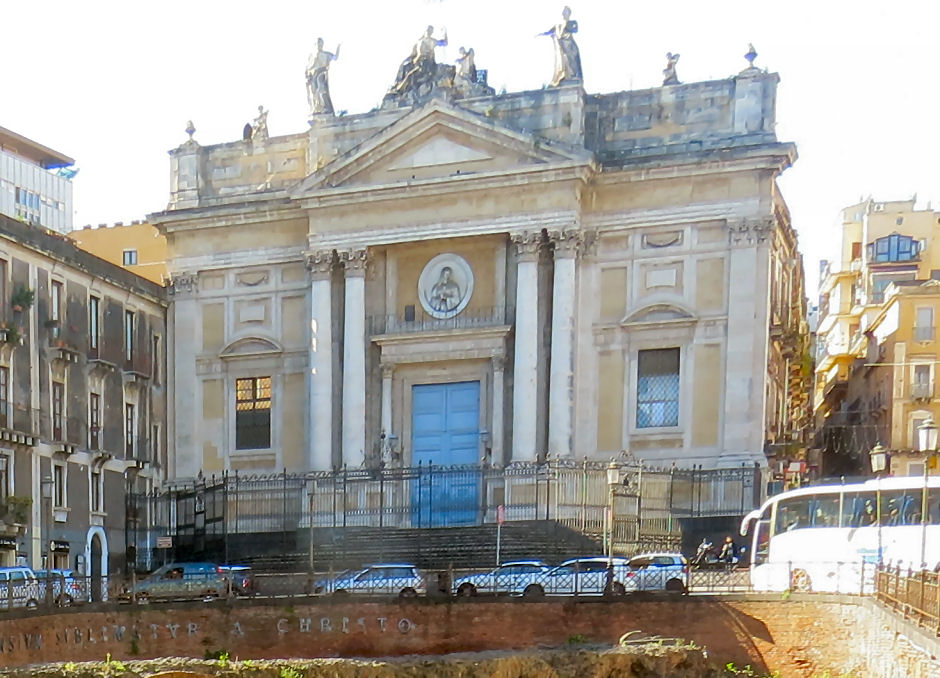
The only ones in the vicinity who seemed to be interested in this statue were myself and some pigeons. I had never seen a Bellini opera. The Met had Norma scheduled for 2017. I would love to see it, but it was not on the list of operas that would be shown in the Live in HD series.

Sue and I walked over to a cafe that specialized in coffee and gelato. Its name was Don Gelato, and its major attraction for me was that it was inside. Moving around in the sunshine was pleasant enough, but it was too chilly, at least for me, to sit in the shade and eat a gelato. Sue got a large coppa of some kind of ice cream. I ordered a small cup and a coffee. There was one other person in the place when we arrived, but for thirty minutes or so in the middle of the day we were the only customers. The lack was not too surprising; the prices were high, the quality was mediocre, and it was December.
On the way back to the group's meeting place back in the little park we stopped for a few minutes at Piazza Duomo. Sue sat there and waited for me while I tried to find a place that sold potato chips. I went a couple of blocks away from Via Etnea. I finally found a market that sold San Carlo products. I purchased a package of the equivalent of Cheese Doodles. They made a suitable lunch.
We retrieved our luggage from Giuseppe's bus for the last time. He seemed like a good driver and a very nice guy.

We walked a few blocks to the Liberty Hotel. It was unlike any hotel that I would ever consider associating with Rick Steves. The lobby area was quite spacious. The room that we were assigned was very nicely appointed and quiet. There was no shortage of space in it, and the bathroom was especially commodious. It was obviously pretty old, but it was so comfortable that I wished that we were staying more than one night here. Actually only about half of a night.
The day was by no means over; in fact, the best part lay ahead of us. After a few minutes to get settled, we met again in the lobby and trooped down to Giuseppe and the bus. He drove us up (literally) to the Benanti Winery in Viagrande.
The first part of our visit was overseen by Valentina, who was a sommelier at the vineyard. She told us that the winery had been founded by Giuseppe Benanti, a chemist, who walked away from a thriving pharmacy to devote his life to producing and promoting the wines of Mt. Etna in 1988. He spent time and money analyzing the soils and chemistry of the wines of Etna, and he implemented some modern techniques aimed at producing extremely high-quality wine.
Valentina told us that the grapes of Mt. Etna survived the phylloxera infestation that wiped out the root systems of almost all European grapes in the late nineteenth century. In other locations it was necessary to graft European plants onto roots imported from North America in order to resuscitate the wine business. The grapes grown on Mt. Etna, in contrast, come from very old plants that have never undergone the grafting process. They include Nerello Mascalese and Carricante. I had never heard of either of these.
Valentina, who wore saddle-shoe colored wingtips, led us on a quick tour of parts of the vineyard that were quite a bit higher than the cantina. There was good news and bad news. The good news was that the views from the vineyard were spectacular, and the evening lighting was special. The bad news was that almost as soon as she started moving, the “Whisper” microphone that she had attached to her jacket fell down to her knee, and she did not realize this until we had returned to the cantina. So, most of the wisdom and knowledge that she had imparted was lost in the breeze.
We drank three wines. The first was Spumante, Metodo Classico, Casa Benanti. The second was Serra della Contessa 2012, which was from Nerello Mascalese grapes grown on Etna. The third was Drappo 2008, which was from Nero d'Avola grapes grown elsewhere on Sicily. The Serra della Contessa was by far the driest red wine I had ever tasted. I thought that it was absolutely delicious.
The dinner was IMHO the best of the tour by a wide margin, and the setting was easily the most elegant. I should have taken a photo of the menu because my handwriting was illegible in places. We began with tagiatelle with Etna porcini mushrooms and a hint of lemon zest. The secondo was roast beef slices with chestnuts and crisp fennel. I do not remember the dessert, but what I wrote was “hot chocolate coffee aroma cup, panna fresca and” something illegible. Coffee was served at the end.
Giuseppe Benanti addressed us while we were dining. He told us that his family had lived in Bologna. In 1734 someone[6]
suggested to Giuseppe's branch of the Benati family move to Catania, where they grew vegetables and made wine. They did, and changed the name to Benanti. At the same time others of his family moved to Milan and changed the name to Benatti. Another group moved to Rome.In 1793 the Benantis moved up to Viagrande. Since then eight generations of Giuseppes and Antonios had grown grapes and made wine on the slopes of Mt. Etna. His father stopped production, but Giuseppe was still interested in the business, and he applied himself to it vigorously in the eighties.
Giuseppe had twin sons, Antonio and Salvino, who now ran the company business. He was obviously very proud of them.
Antonio spoke with us about the Benanti Winery. He told us that his father had lost a lot of money, but he had established a very strong business in the end. When Giuseppe started the winery, it was only the second one on Etna. Now there were one hundred thirty-one, and the family seemed to be very happy about that.
The Benanti Winery marketed its products worldwide. Each wine was different from the others because they come from different soils. Over the years Giuseppe had purchased vineyards in other parts of Sicily, but the brothers were now concentrating on the wines from local grapes. They produce about 160,000 bottles a year. Another identifying factor was that the winery aged and stored its products in steel vats. The Etna wines did not seem to interact well with oaken casks.
Valentina had intimated that they were facing a problem—a good problem, but a problem nonetheless: they were running out of wine. It was evidently true. No bottles of the 2012 Serra della Contessa that we had drunk with supper were available. When I asked to buy two bottles, she had to substitute the 2011 vintage, which, of course, she insisted was actually better.
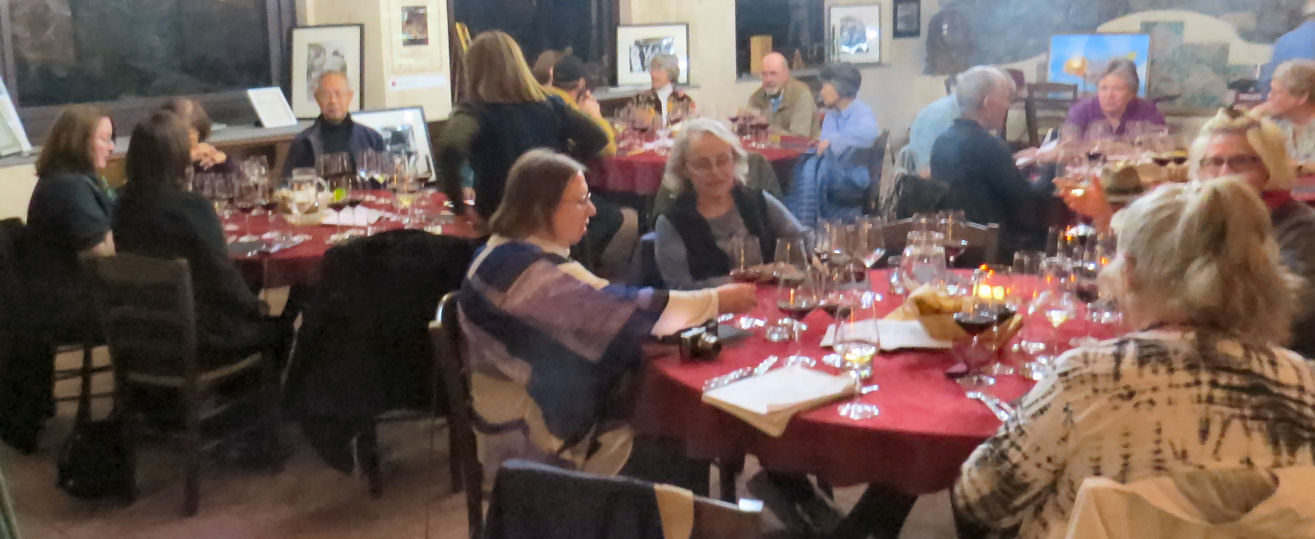
Antonio said that North America was the company's most important market. He had recently returned from a junket promoting their products in the United States. Salvino had been concentrating on opening up new markets and expanding existing ones in Asia.
Antonio reported that their wines had recently been prominently featured in Wine Enthusiast, Wine Spectator, and the New York Times. One of their wines had been ranked #3 in the world. Five of the top one hundred were from the Etna area.
Giuseppe and Antonio were right behind my seat when they talked. I tried to photograph them inconspicuously, but I was really too close, and the angle was bad. Also, I may have consumed a glass or two of wine at that point.
After the food had been cleared, the brothers introduced their cousin Giulia, who ran the kitchen. Everyone applauded her for the exceptional repast we had just consumed.
After supper quite a few people wanted to buy some wine. I purchased two bottles of Serra della Contessa, one for me and one for Tom Corcoran, who was scheduled to pick us up at the airport in Boston.
When we arrived back at the hotel, Sue arranged to share a cab at 0-dark-thirty with Jon, Karen, Laurie, and Leslie. She also had the reception desk print out boarding passes for us.
The last day of the tour had almost certainly been the best. I was ready to go home, but I felt a lot better—in every way—than I had two days earlier.
[1] I was so taken by these hats that I searched for them on the Internet. I found some! Check them out here.
[2] I did not photograph this exhibit because the individual screens were not very interesting to me per se. Tom Meyer spent a lot of time there. He may have been making a video or a slide show.
[3] Her feast day was actually December 4, which was the following Sunday.
[4] Susanna said “faculty” rather than “department.” The Italian word facultà is usually used to designate an area of concentration that has its own faculty.
[5] I think now that it was La somnambula, the sleepwalker.
[6] Prior to the Risorgimento Bologna was almost always part of the Papal States. I am not sure what type of city government, if any, it had in 1734. It is interesting to note that Pope Benedict XIV, who was elected pope in 1740, also came from Bologna. In 1734 he was a cardinal and the Archbishop of Bologna.


